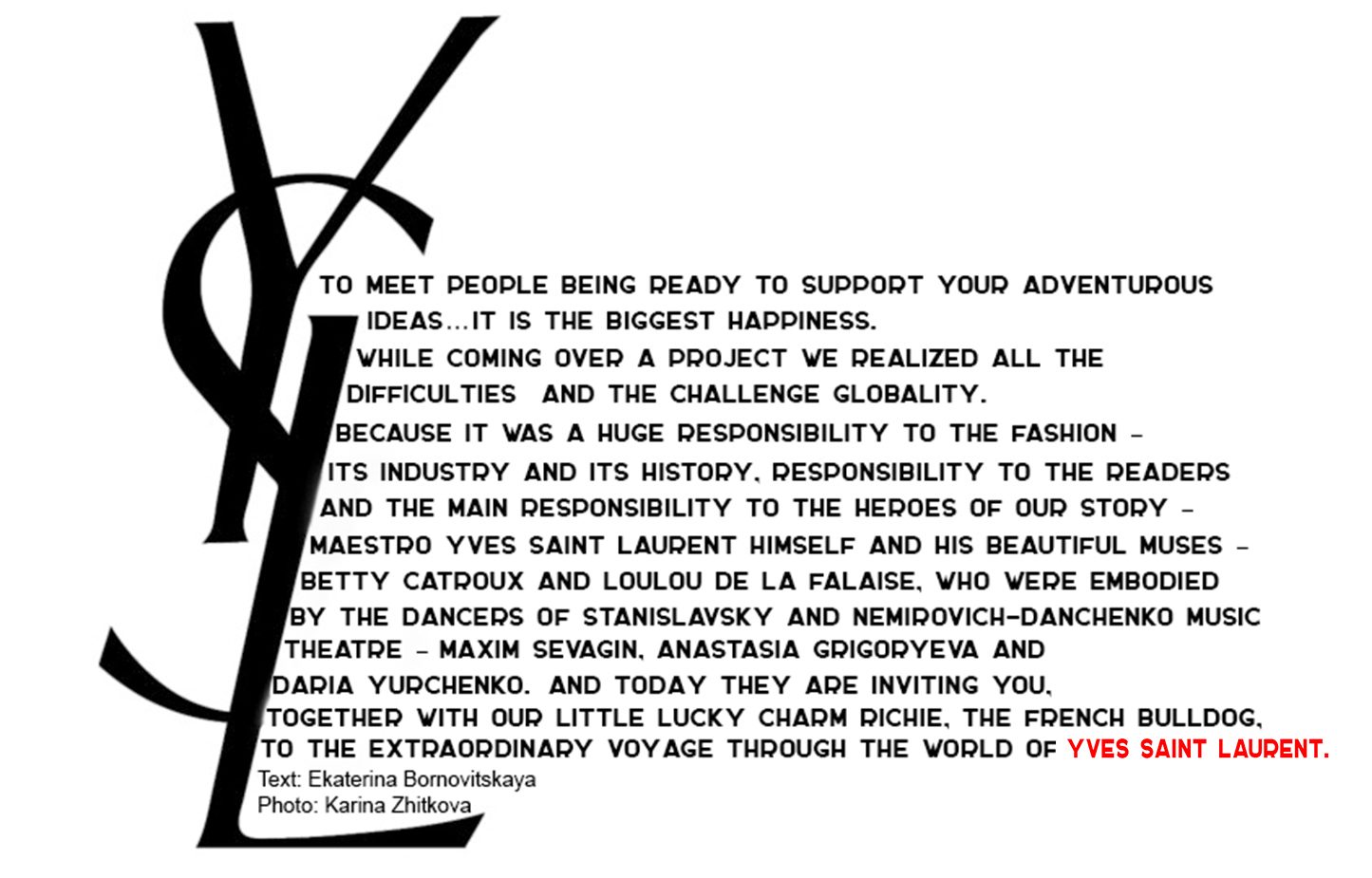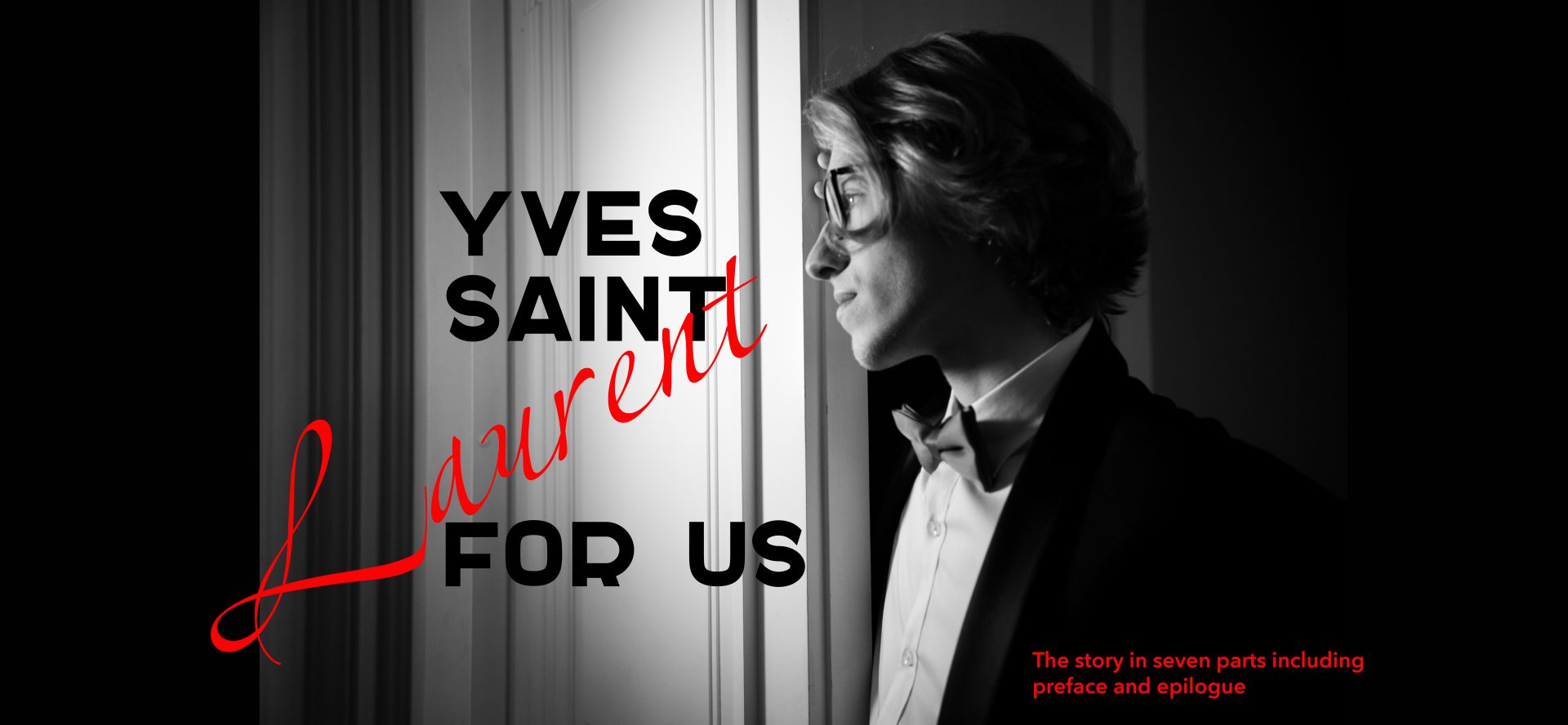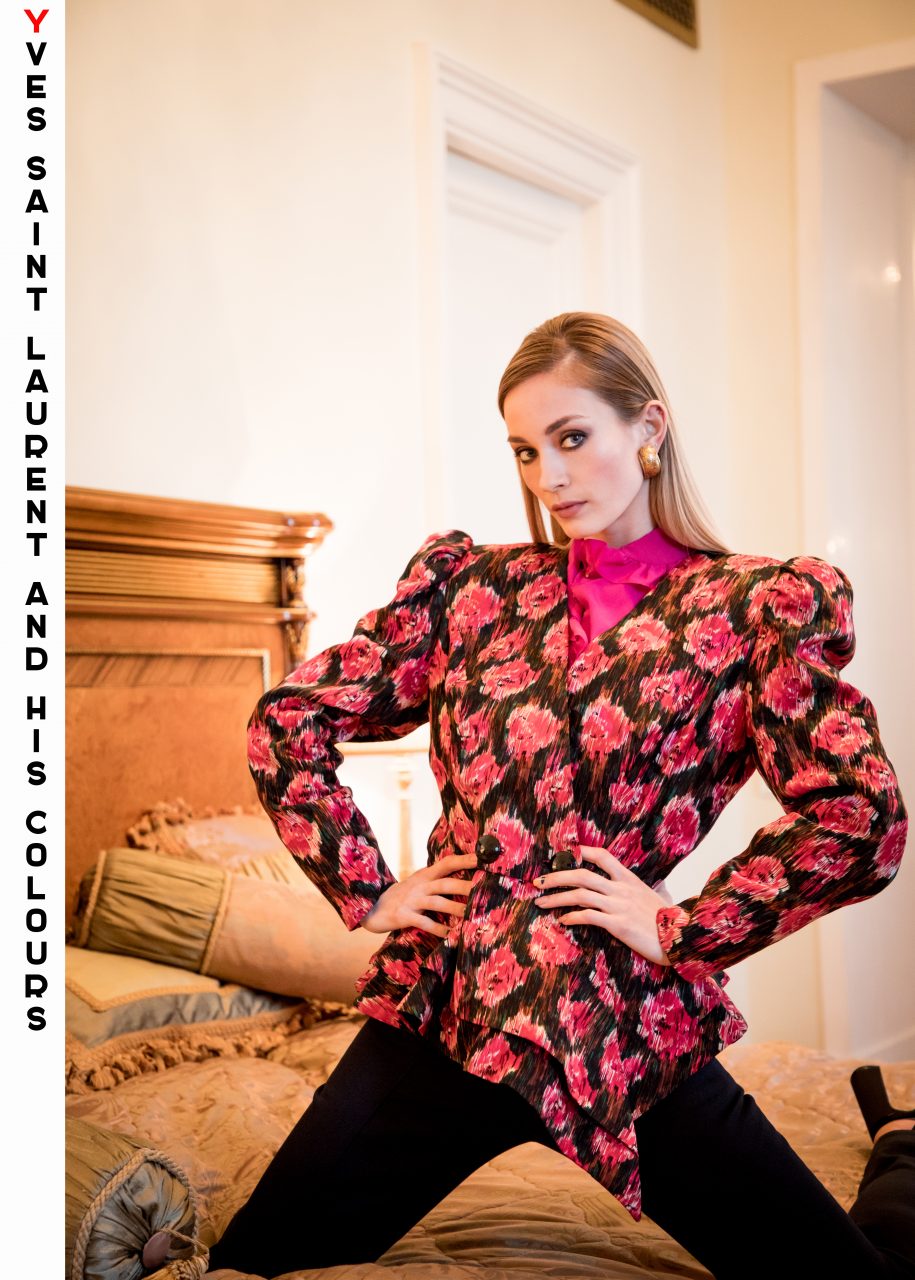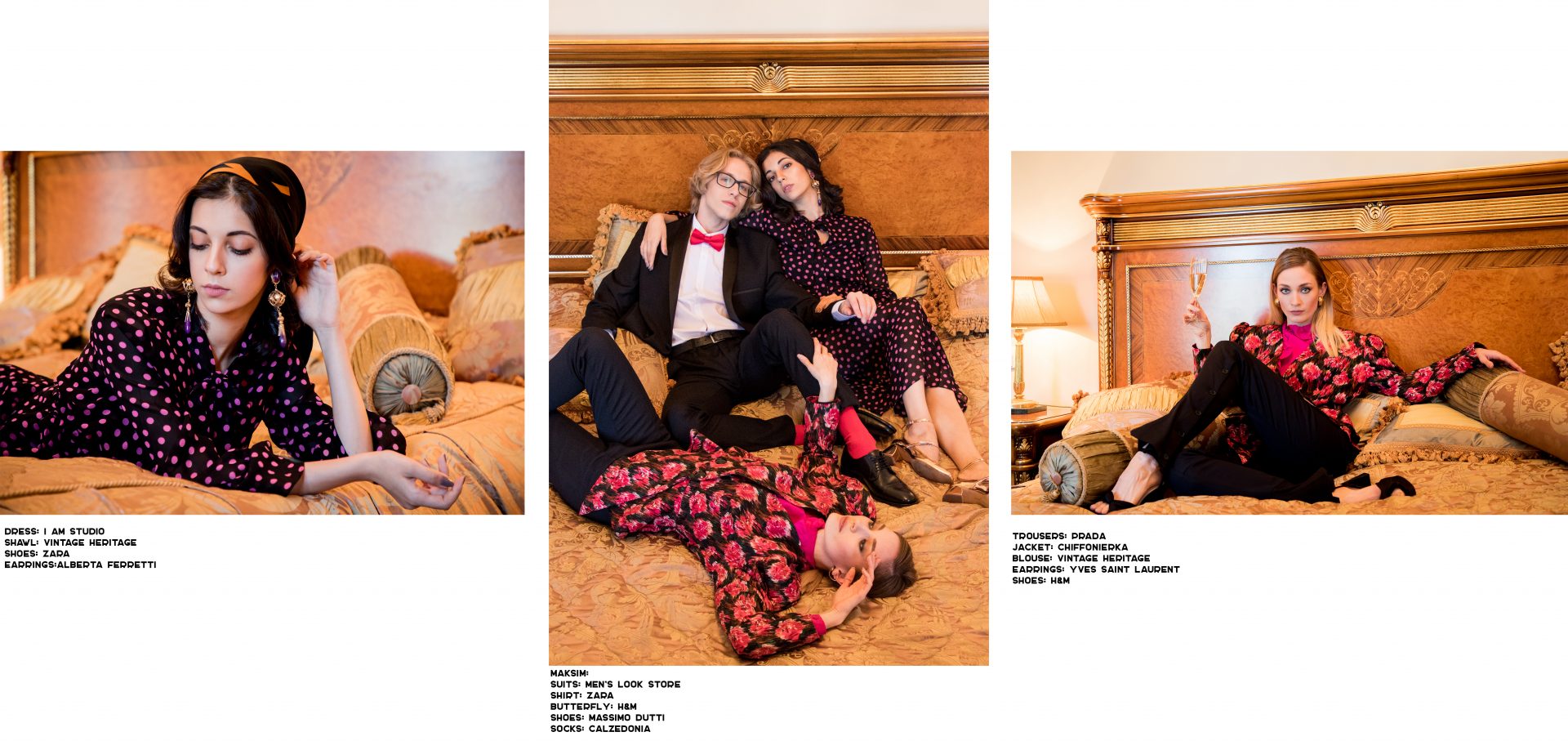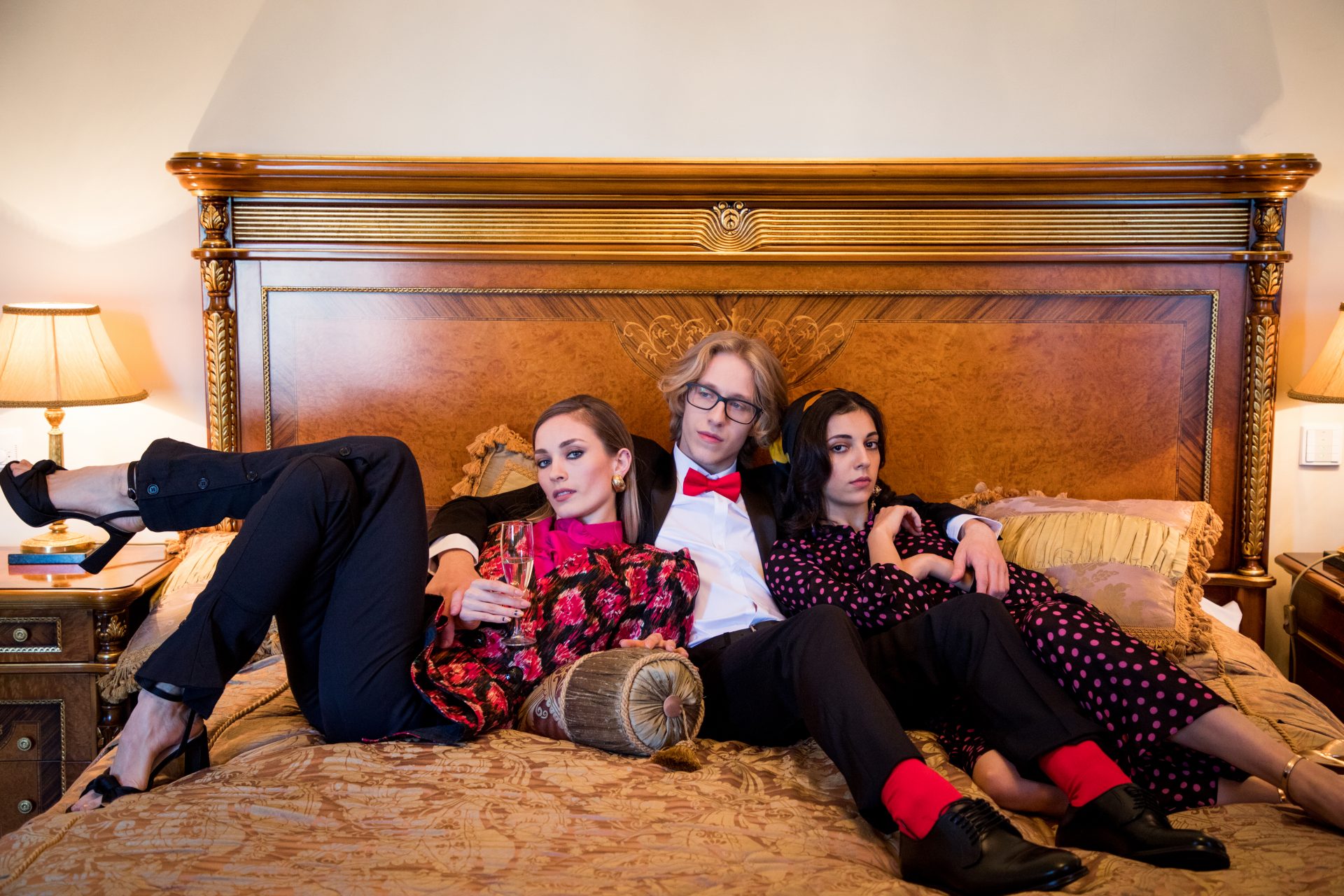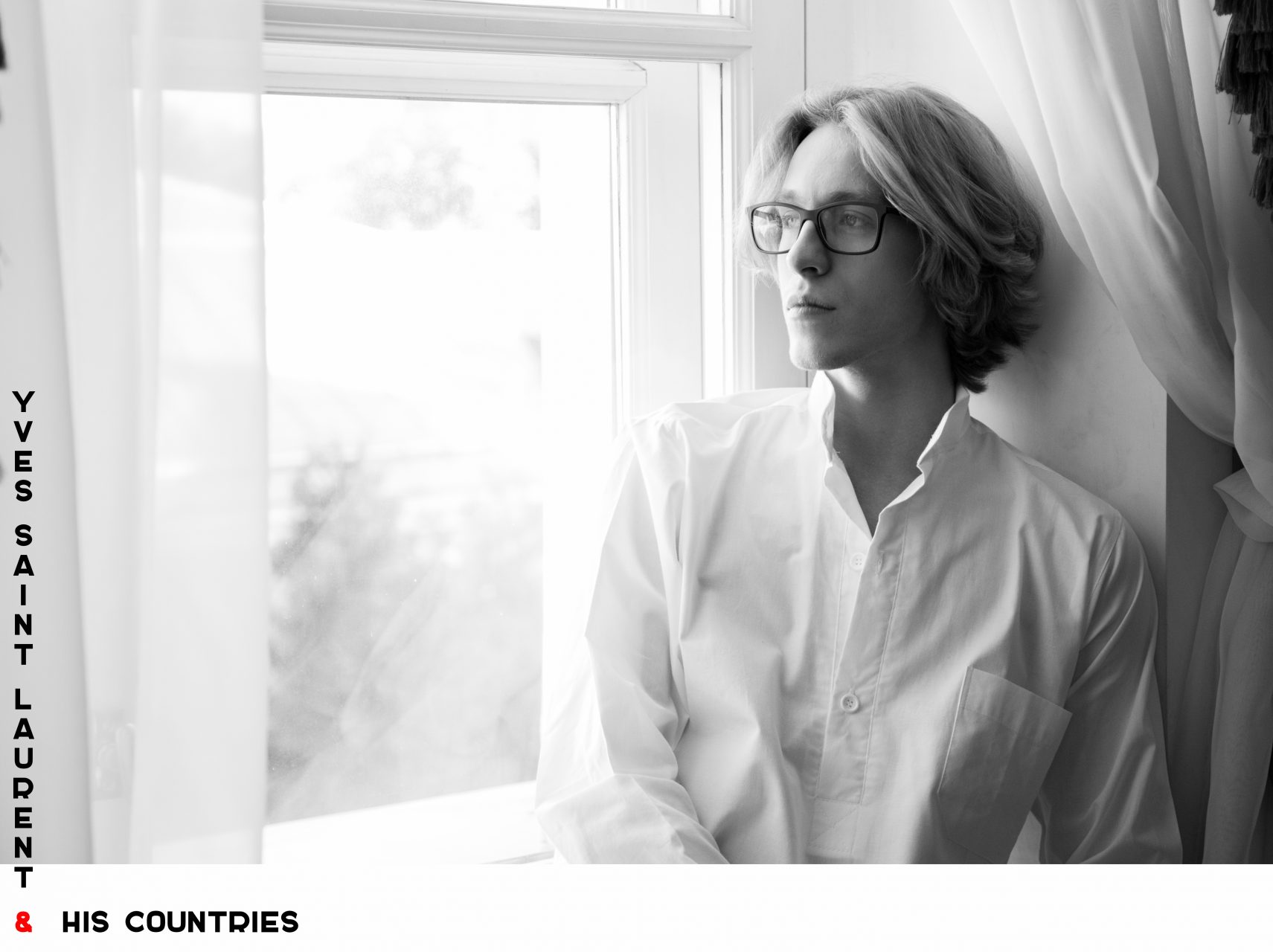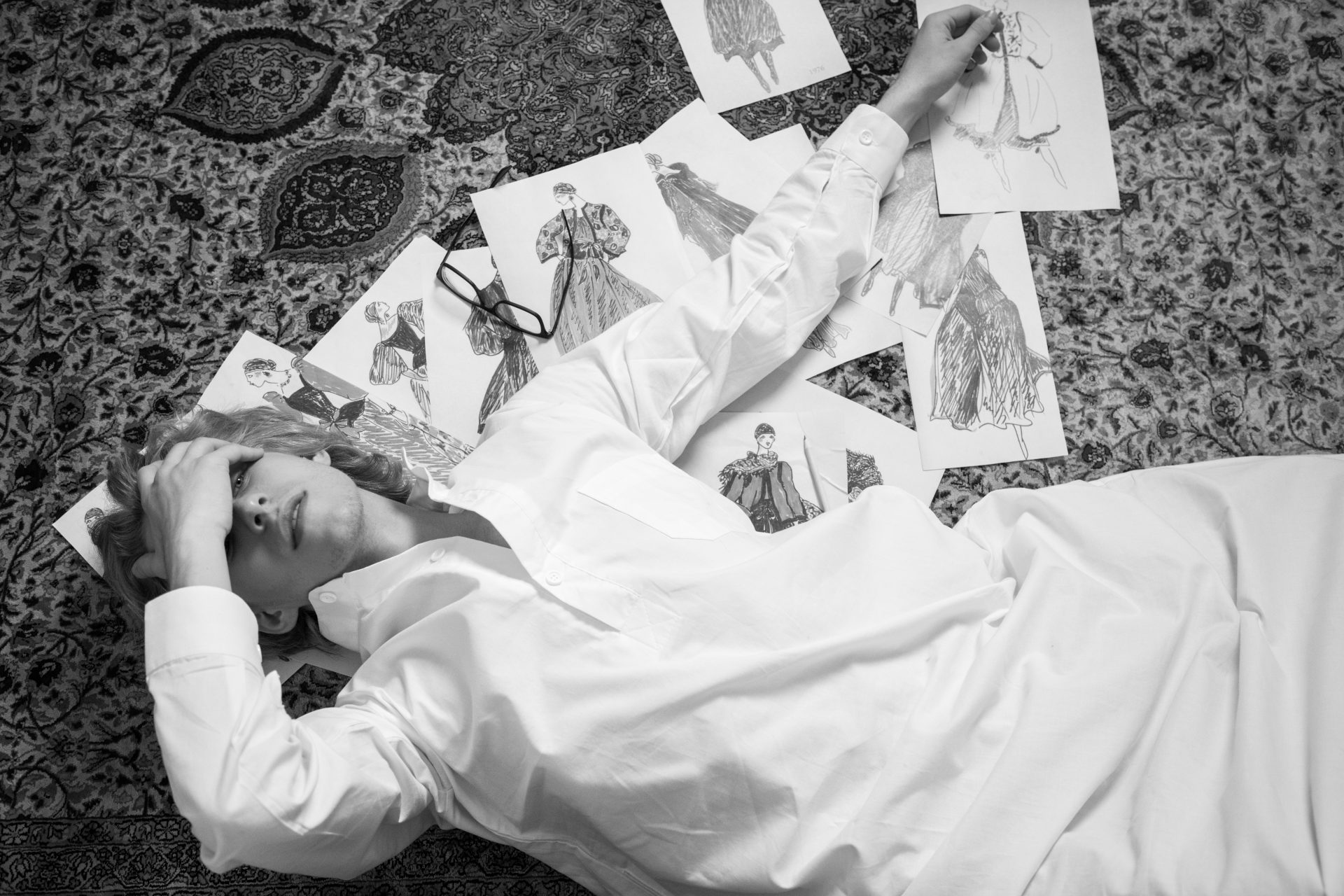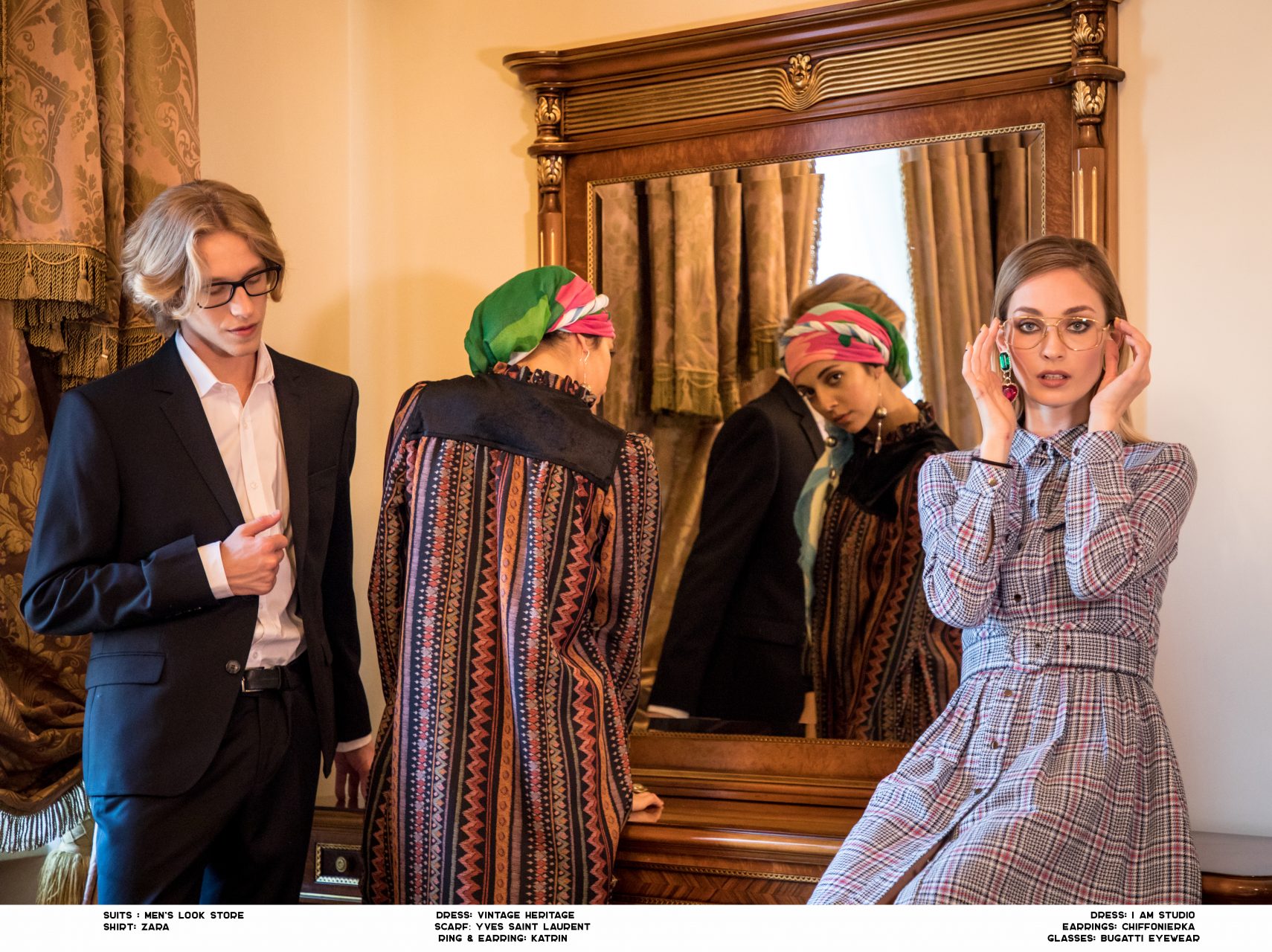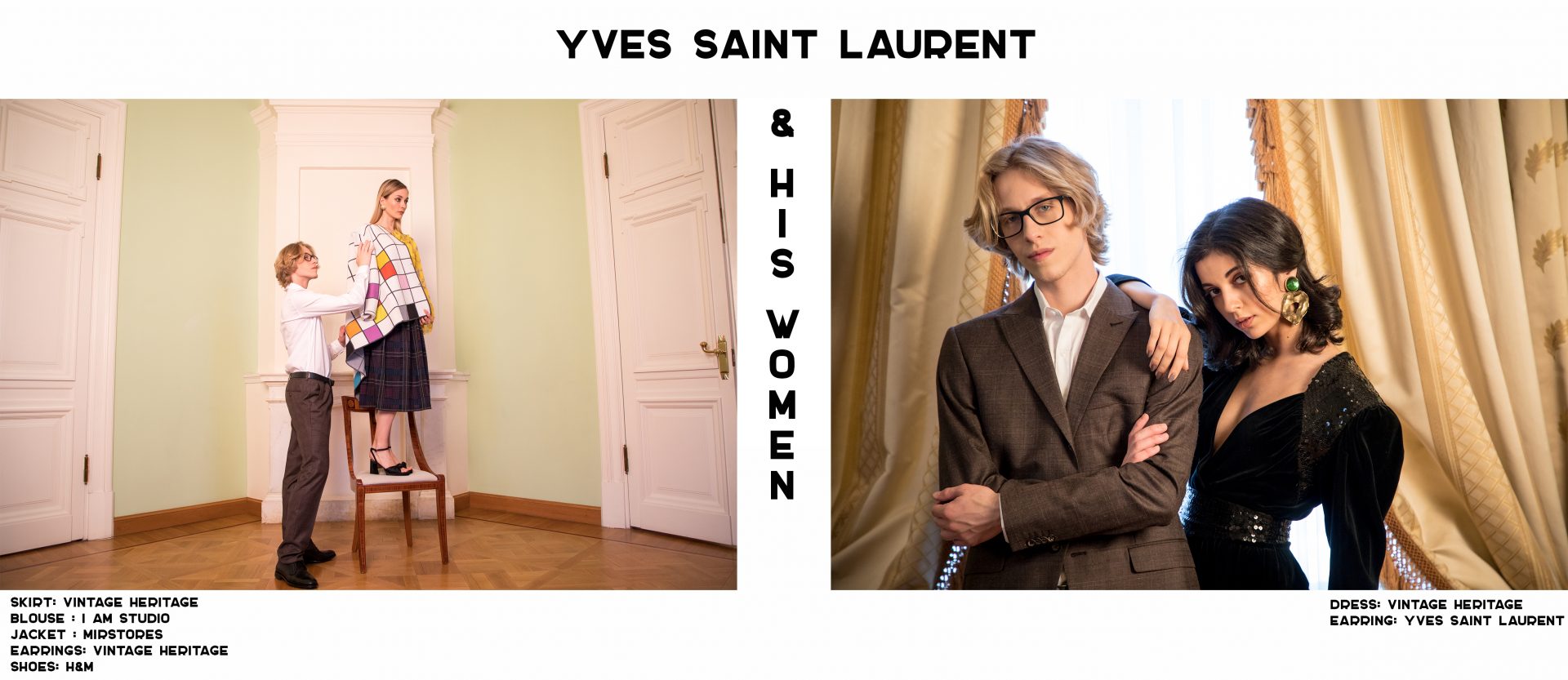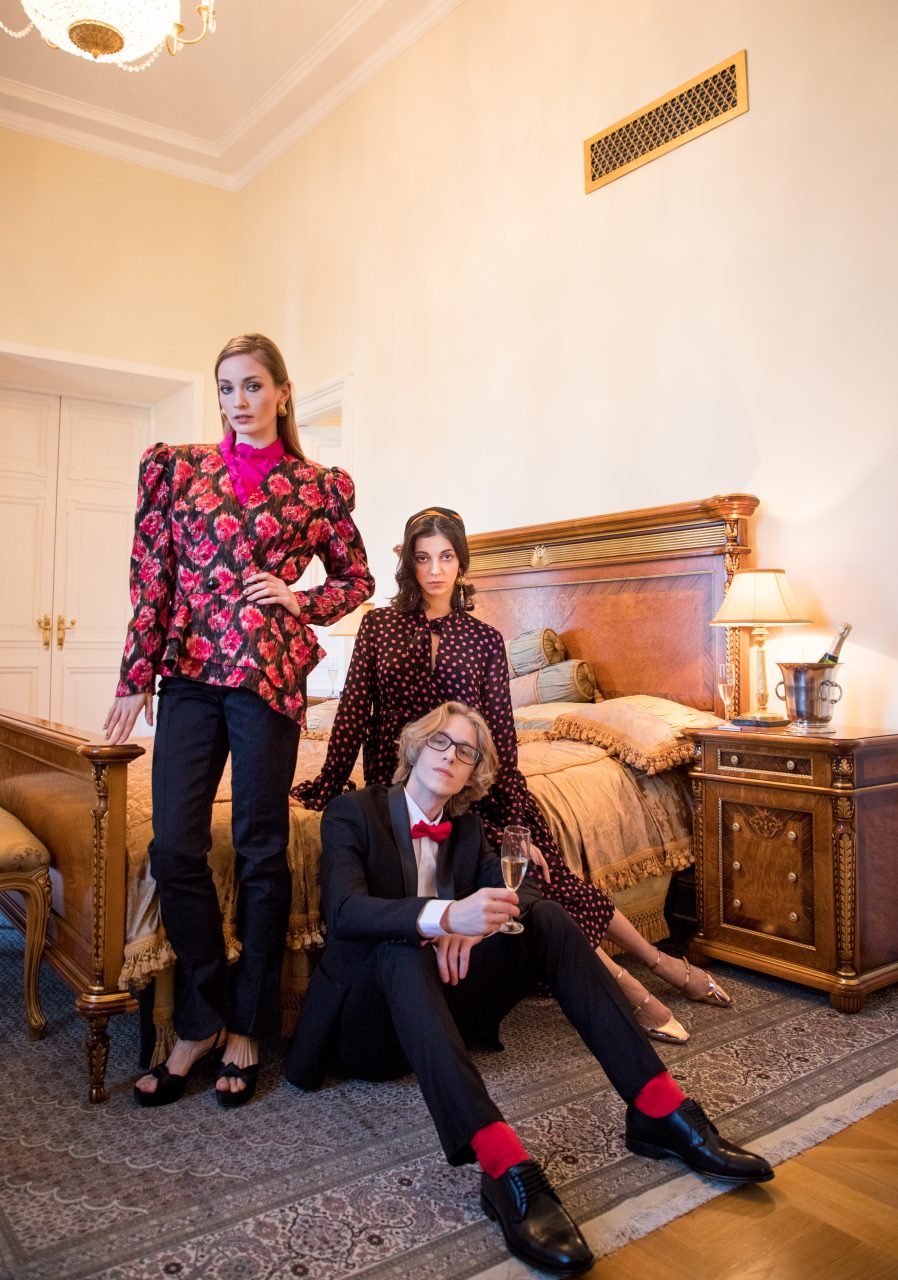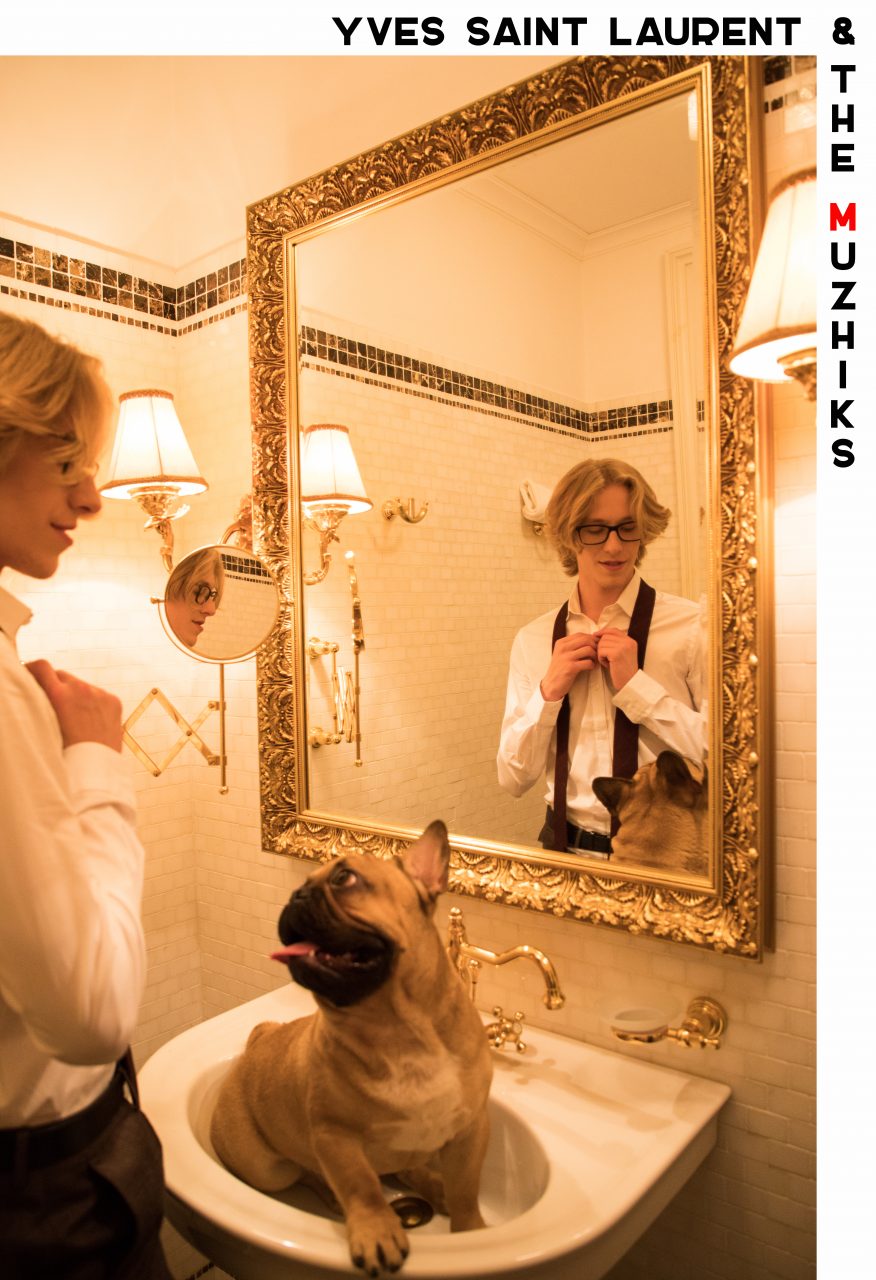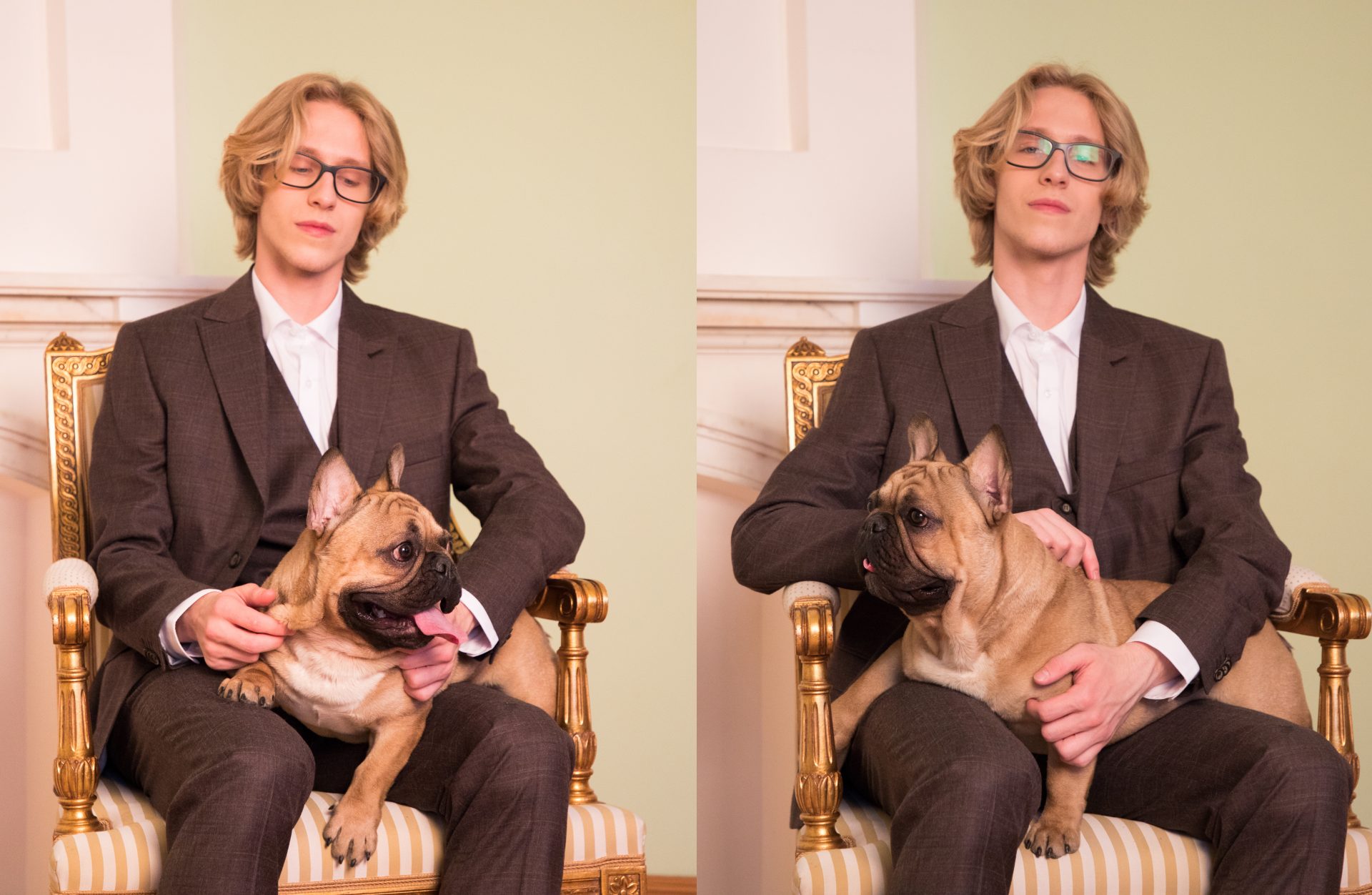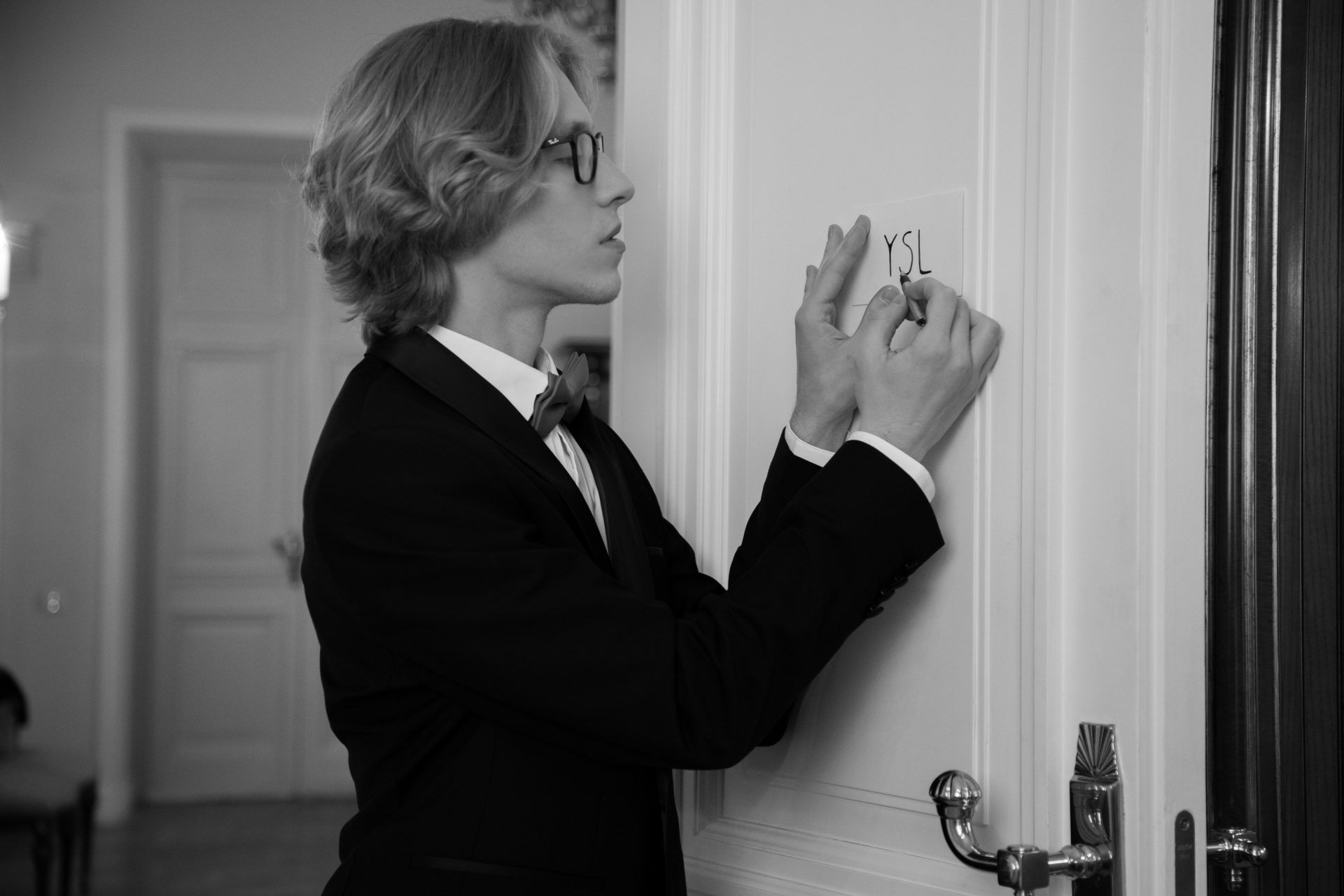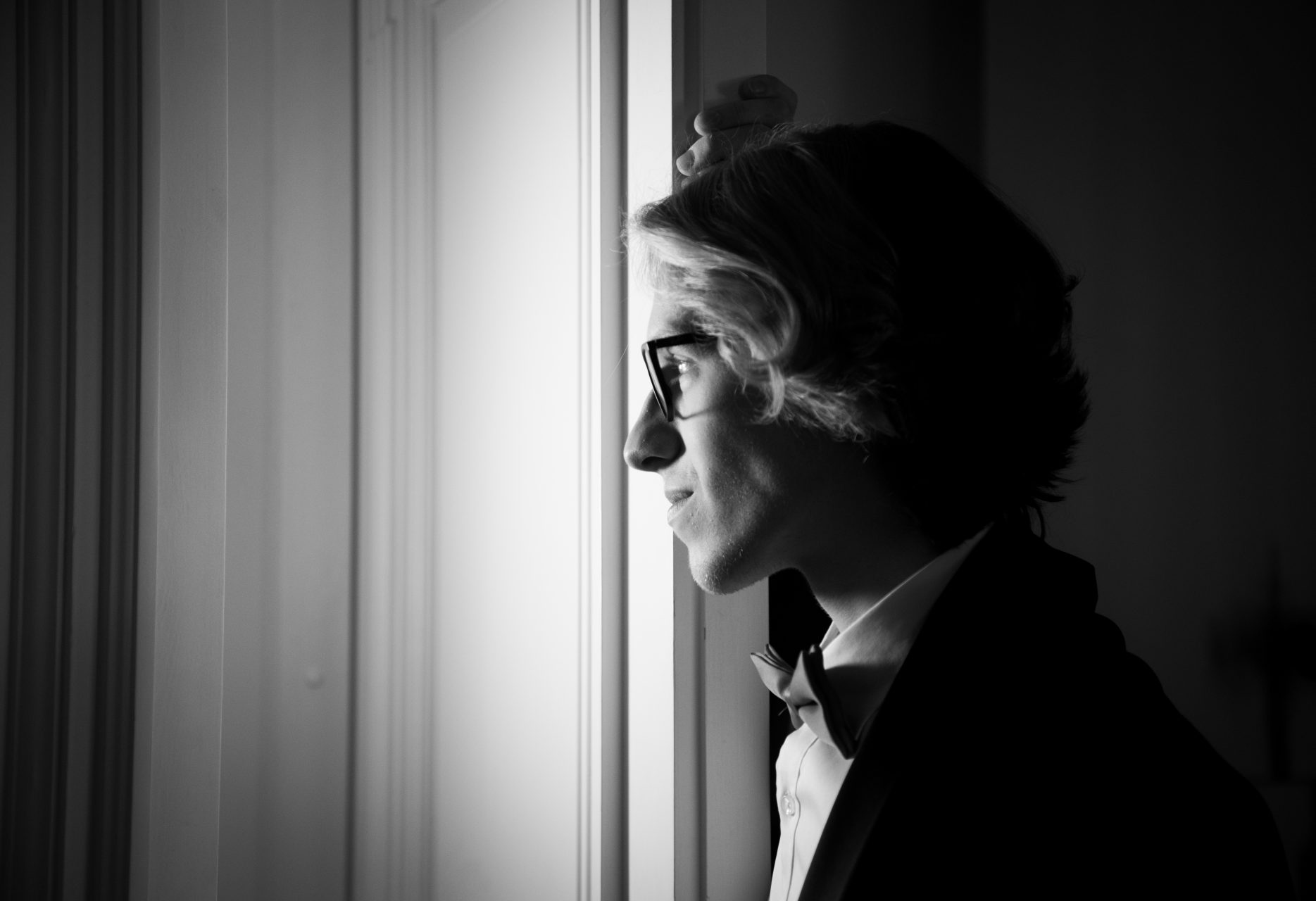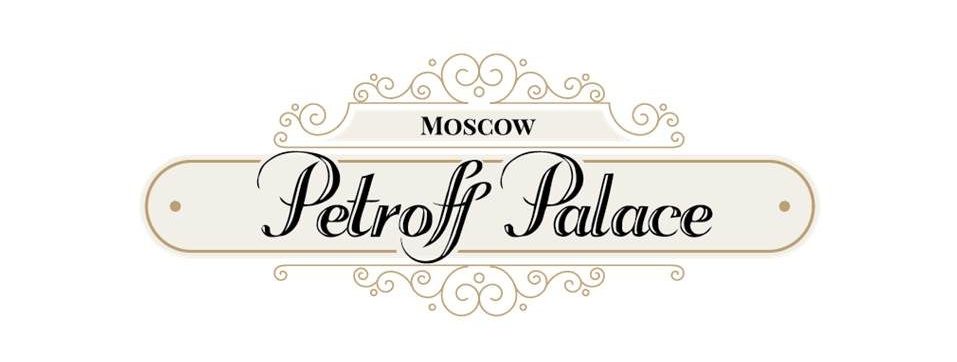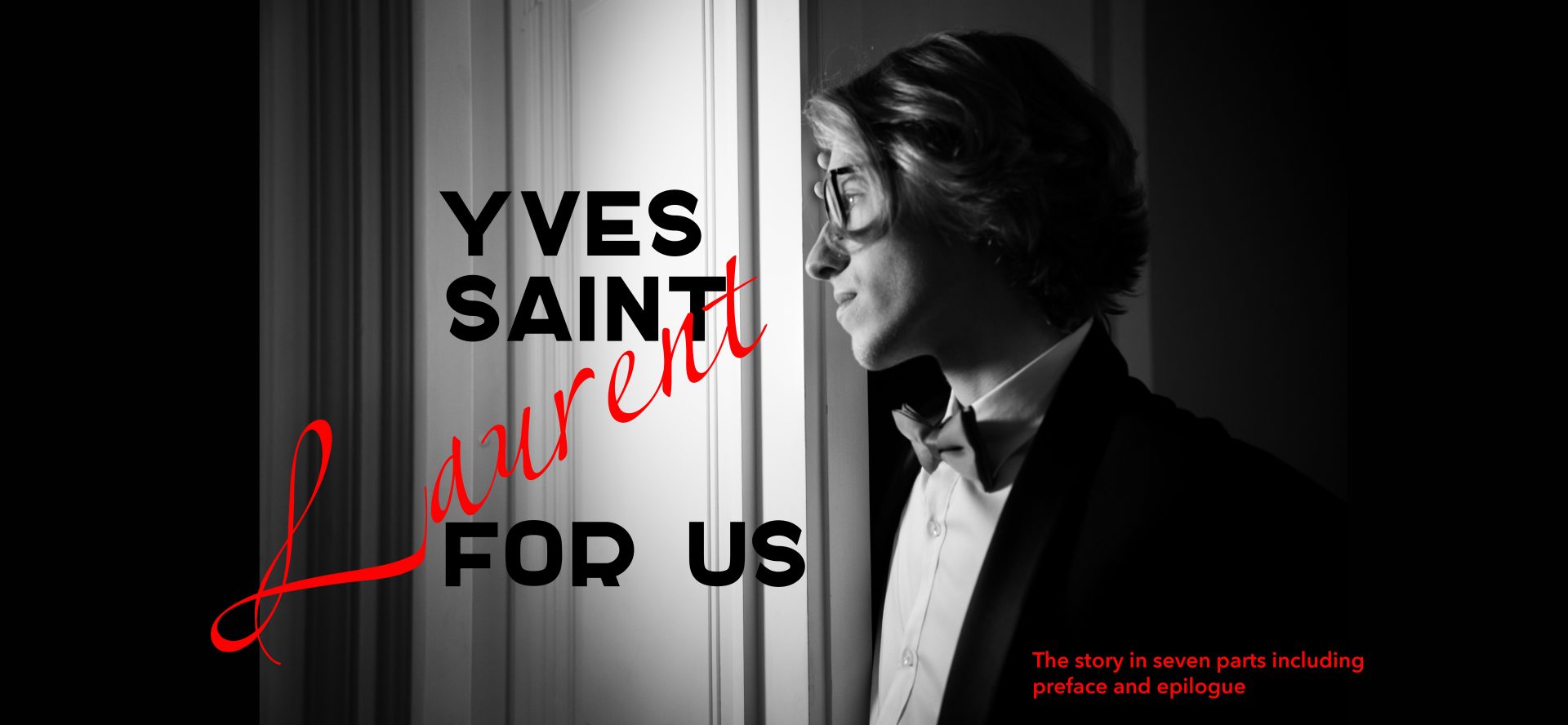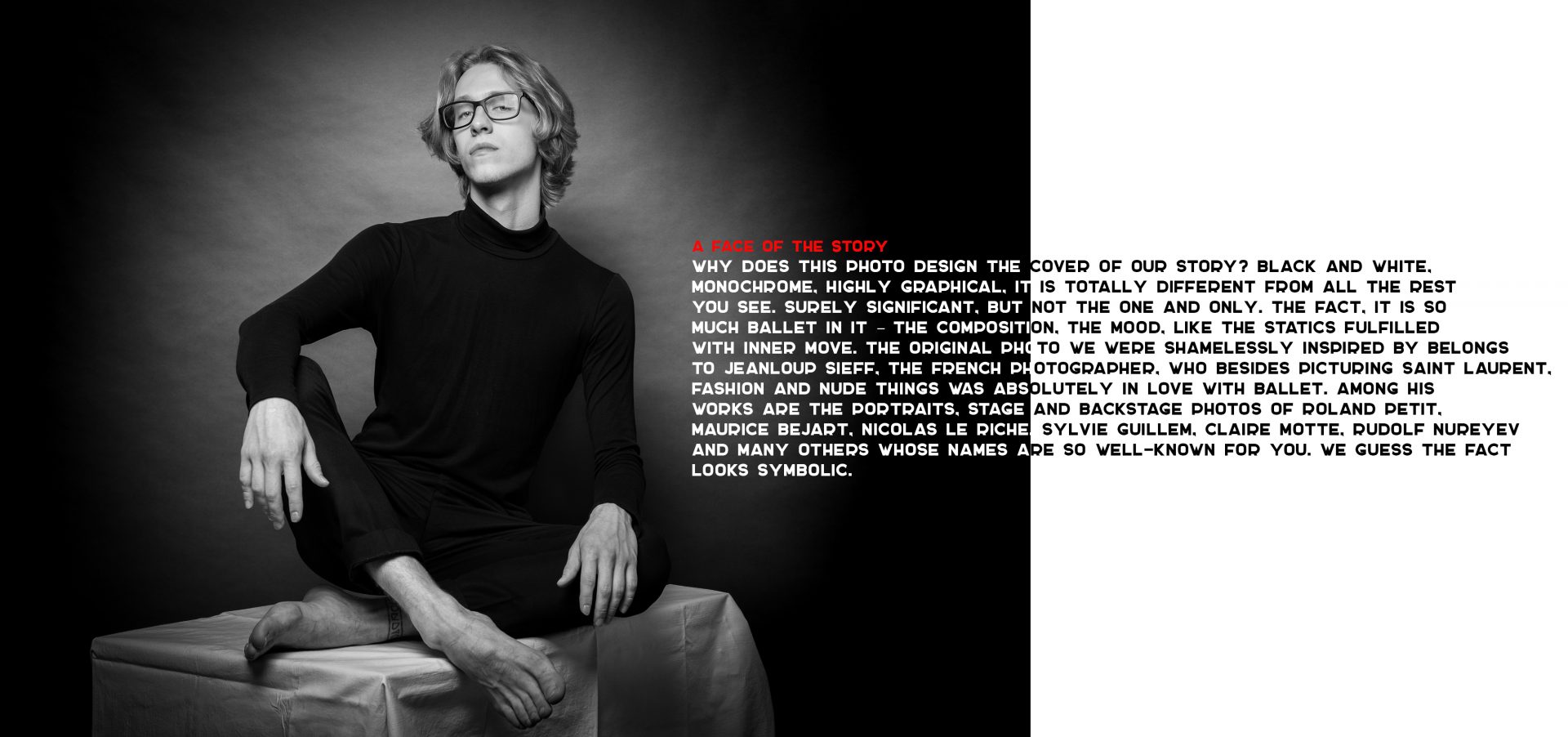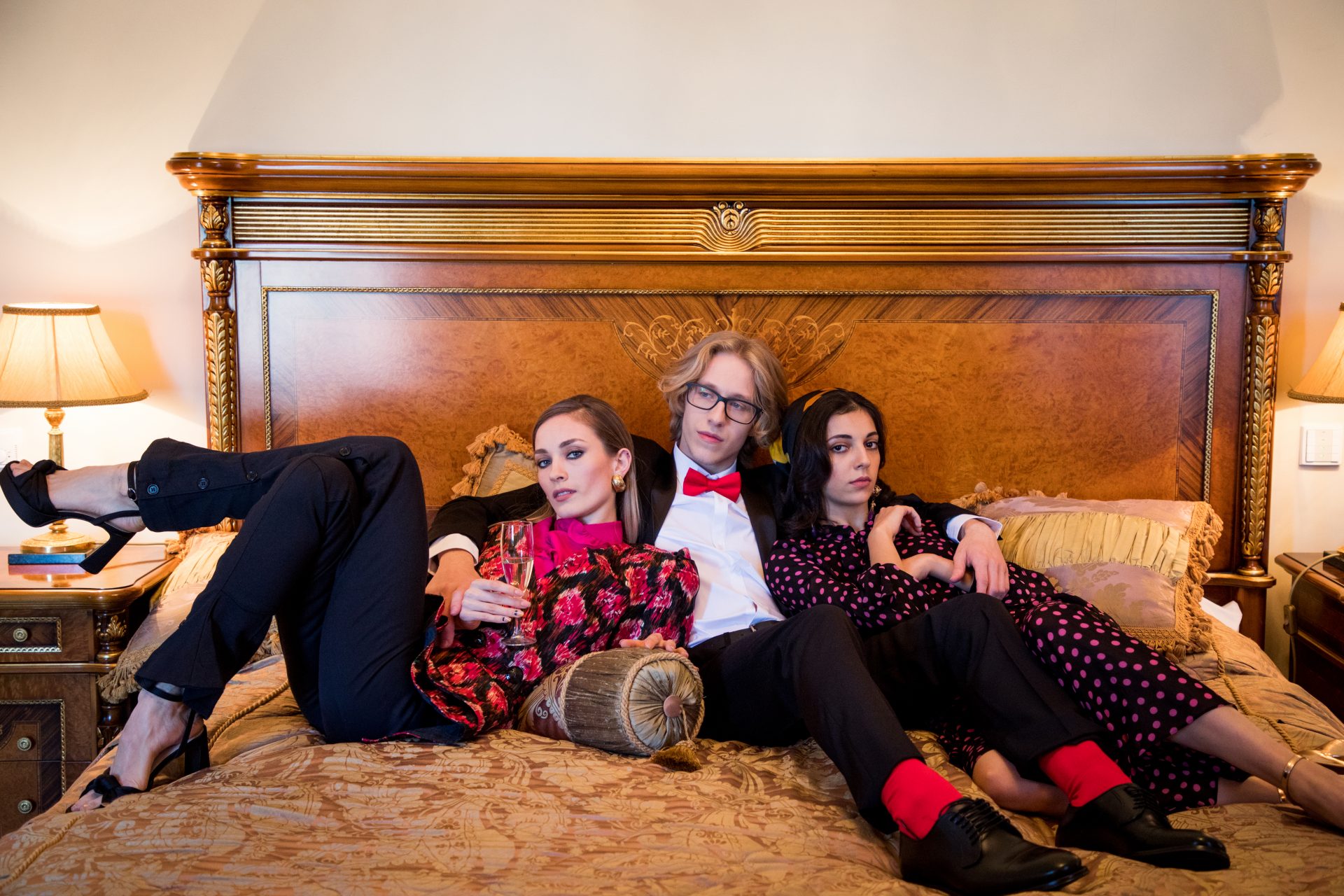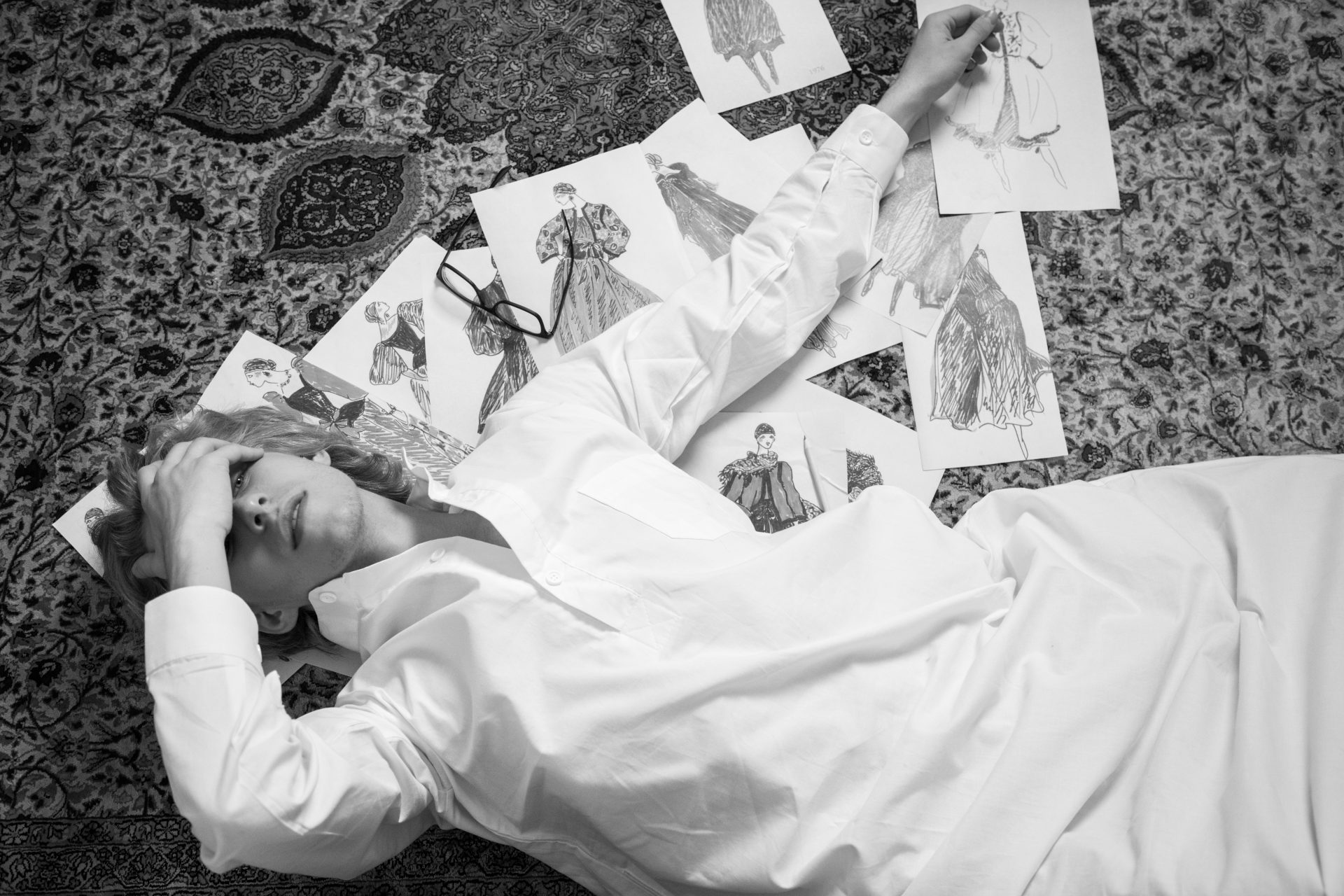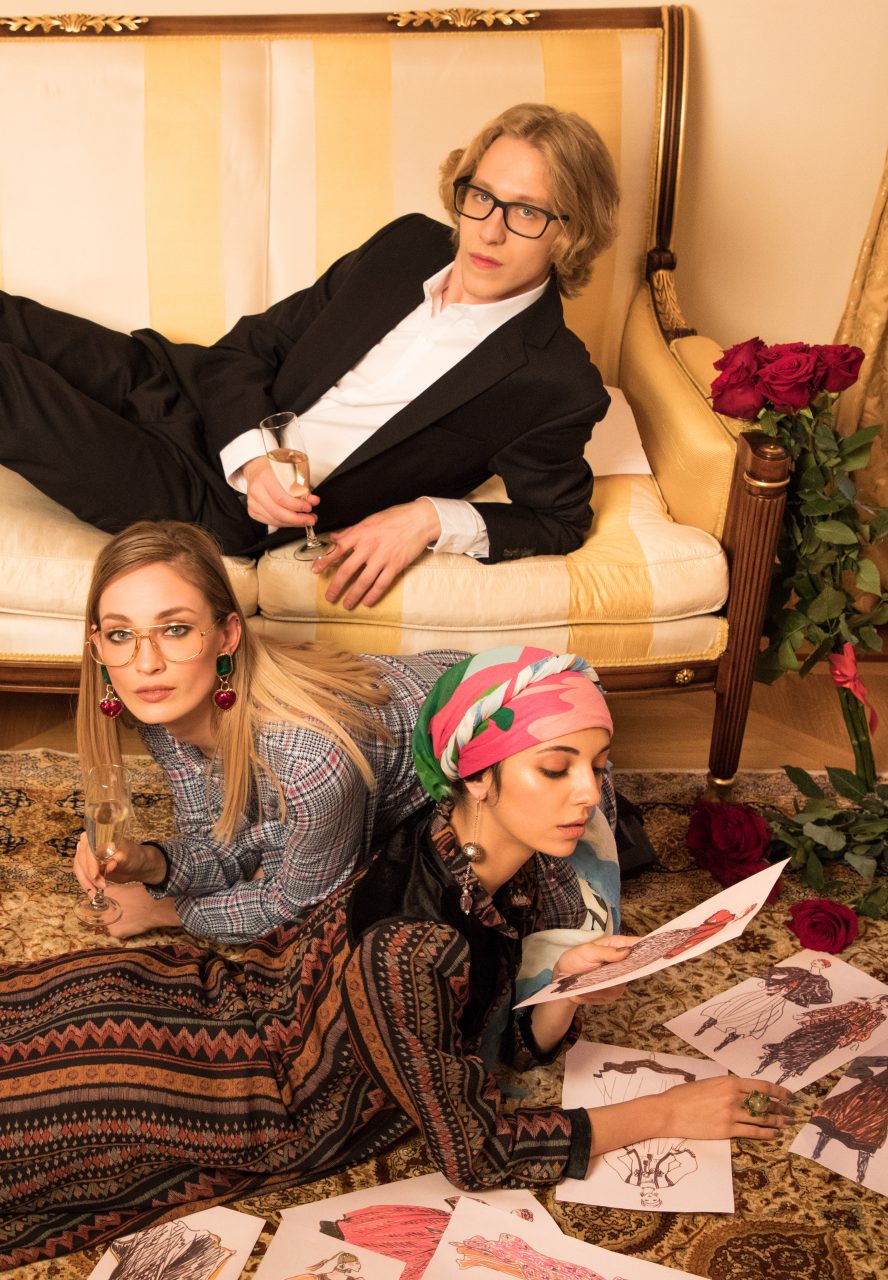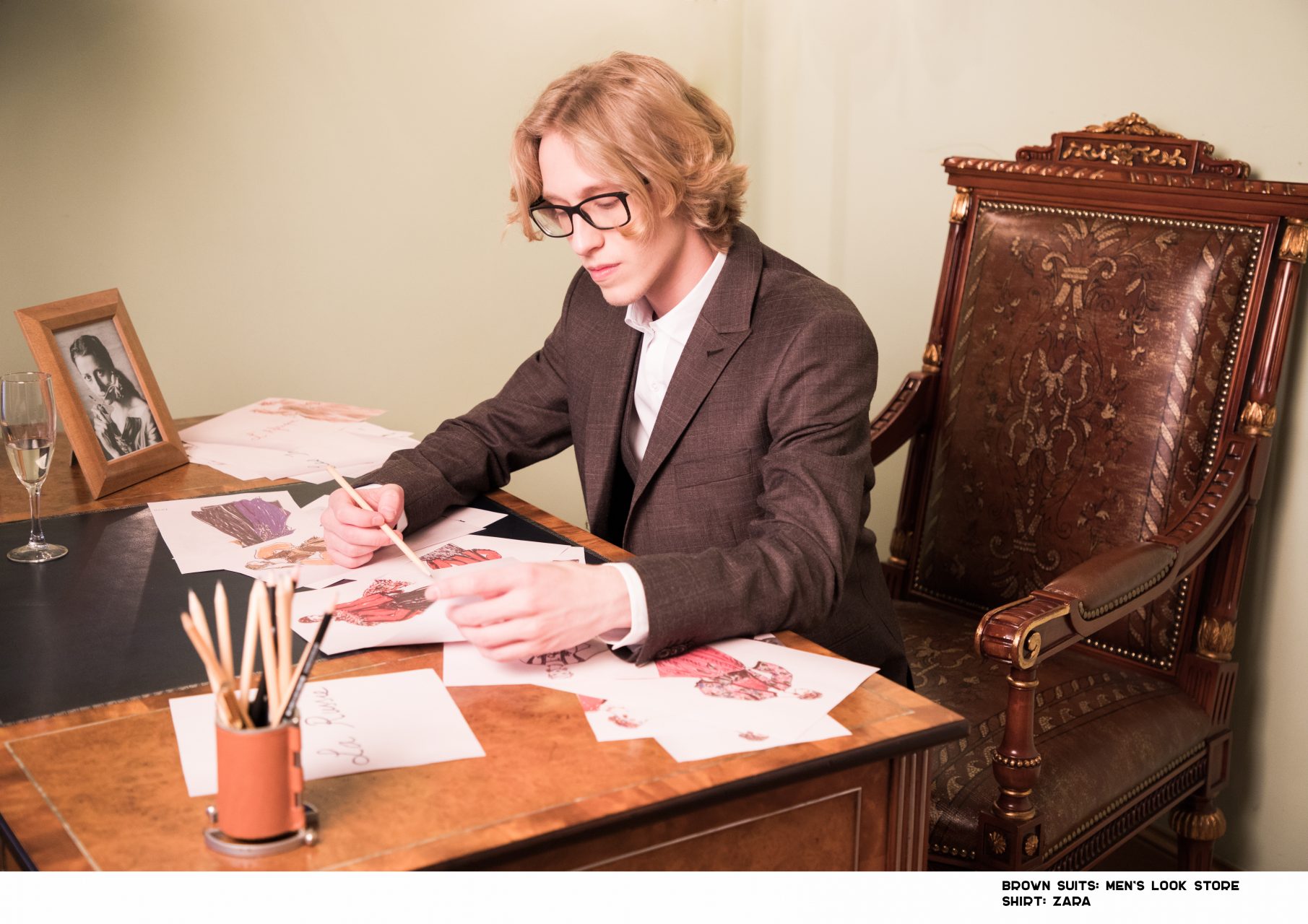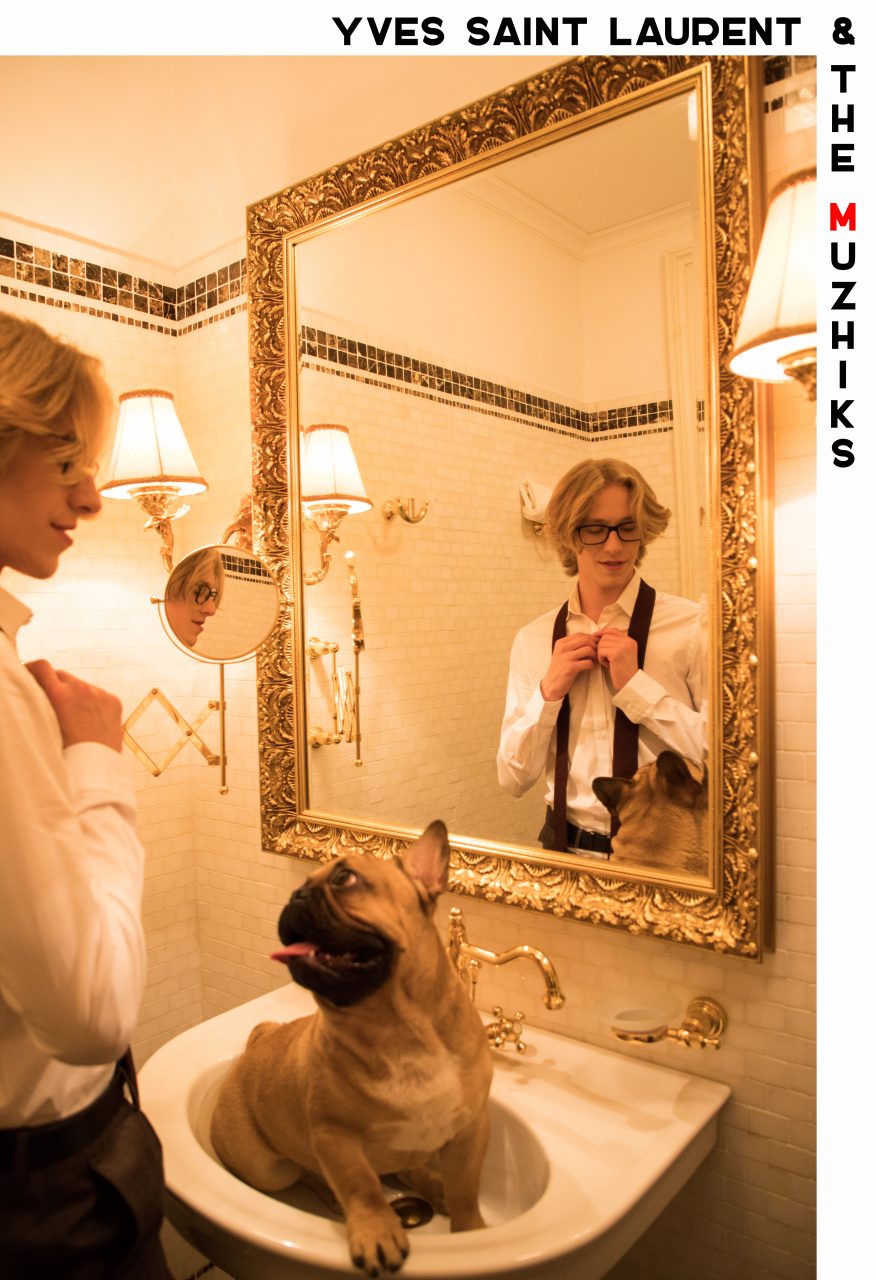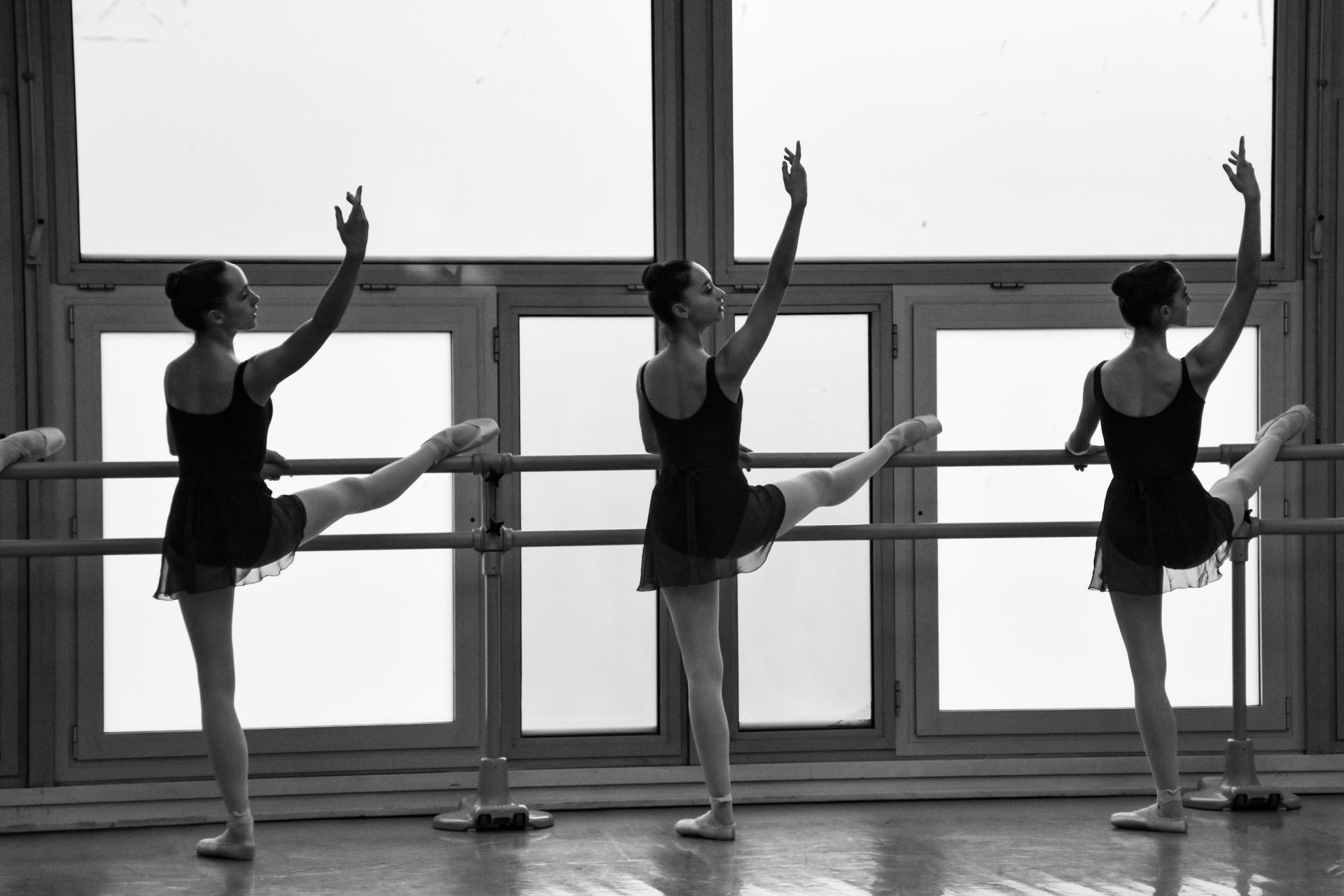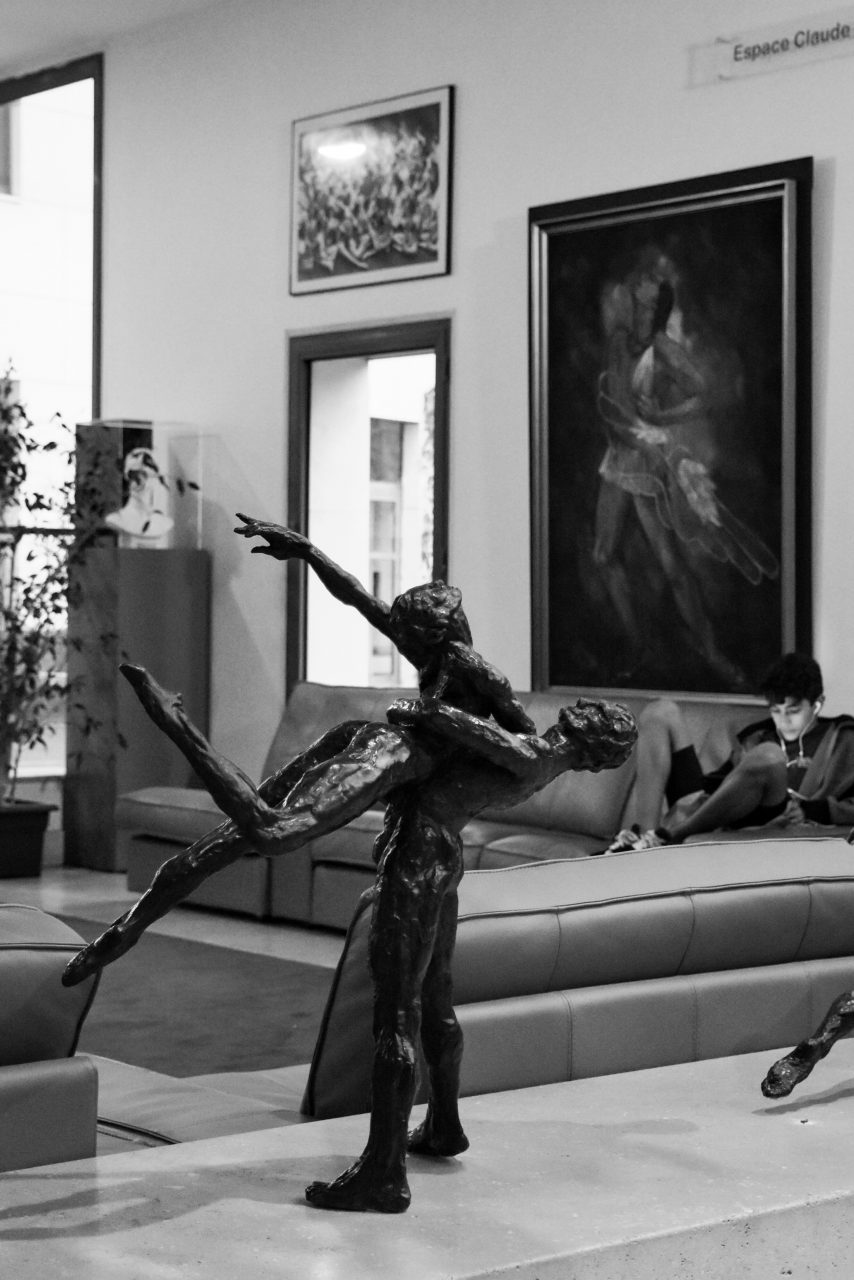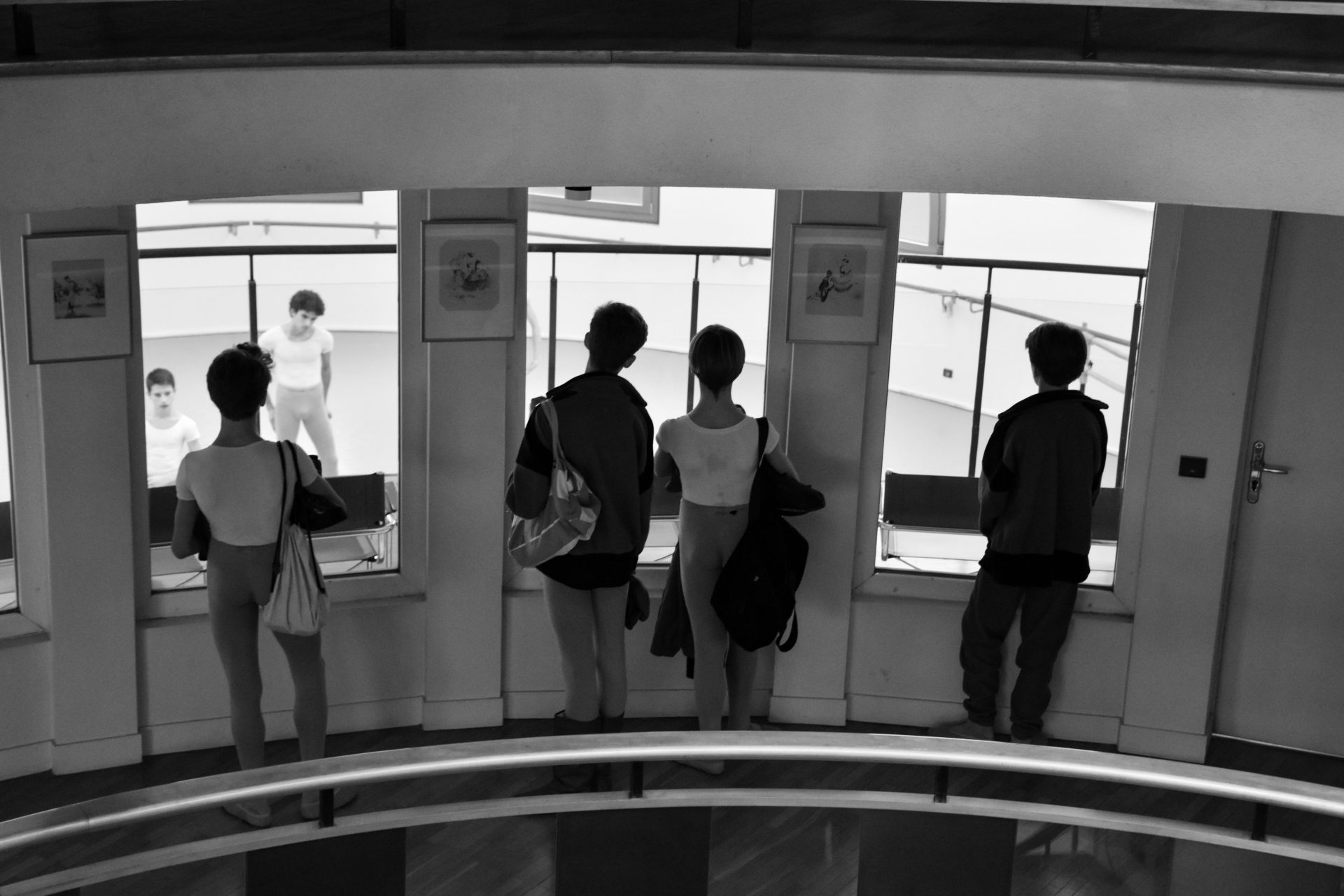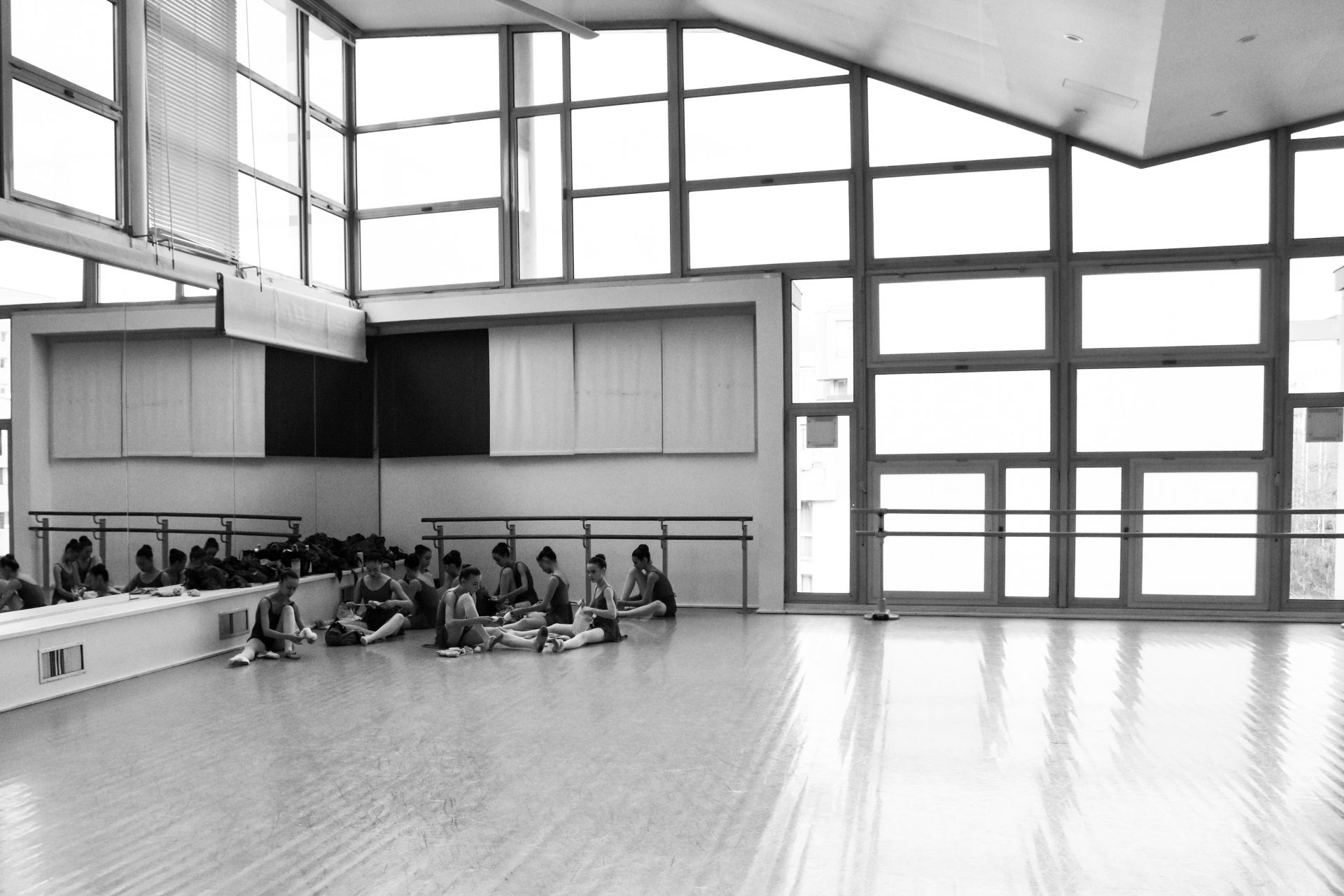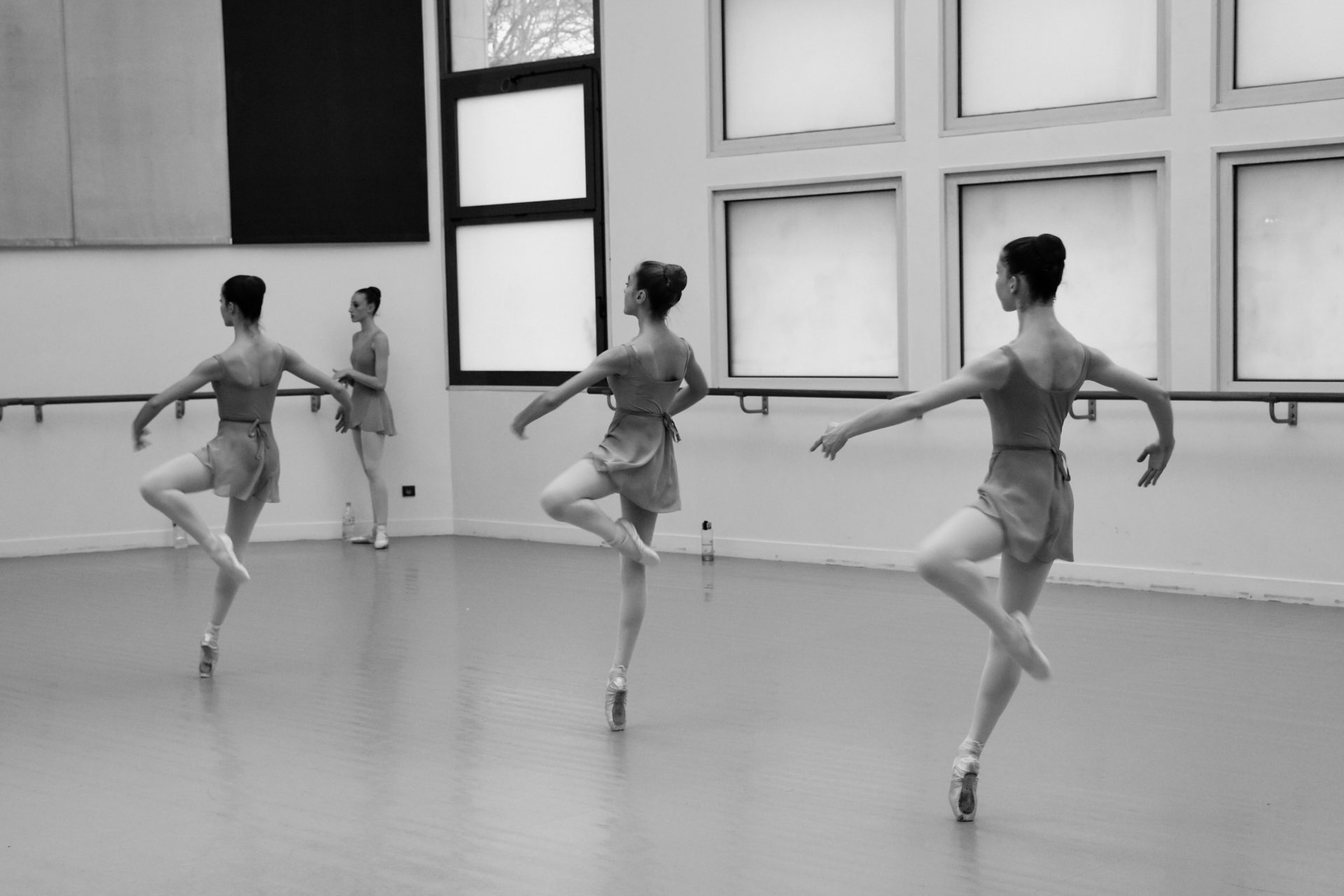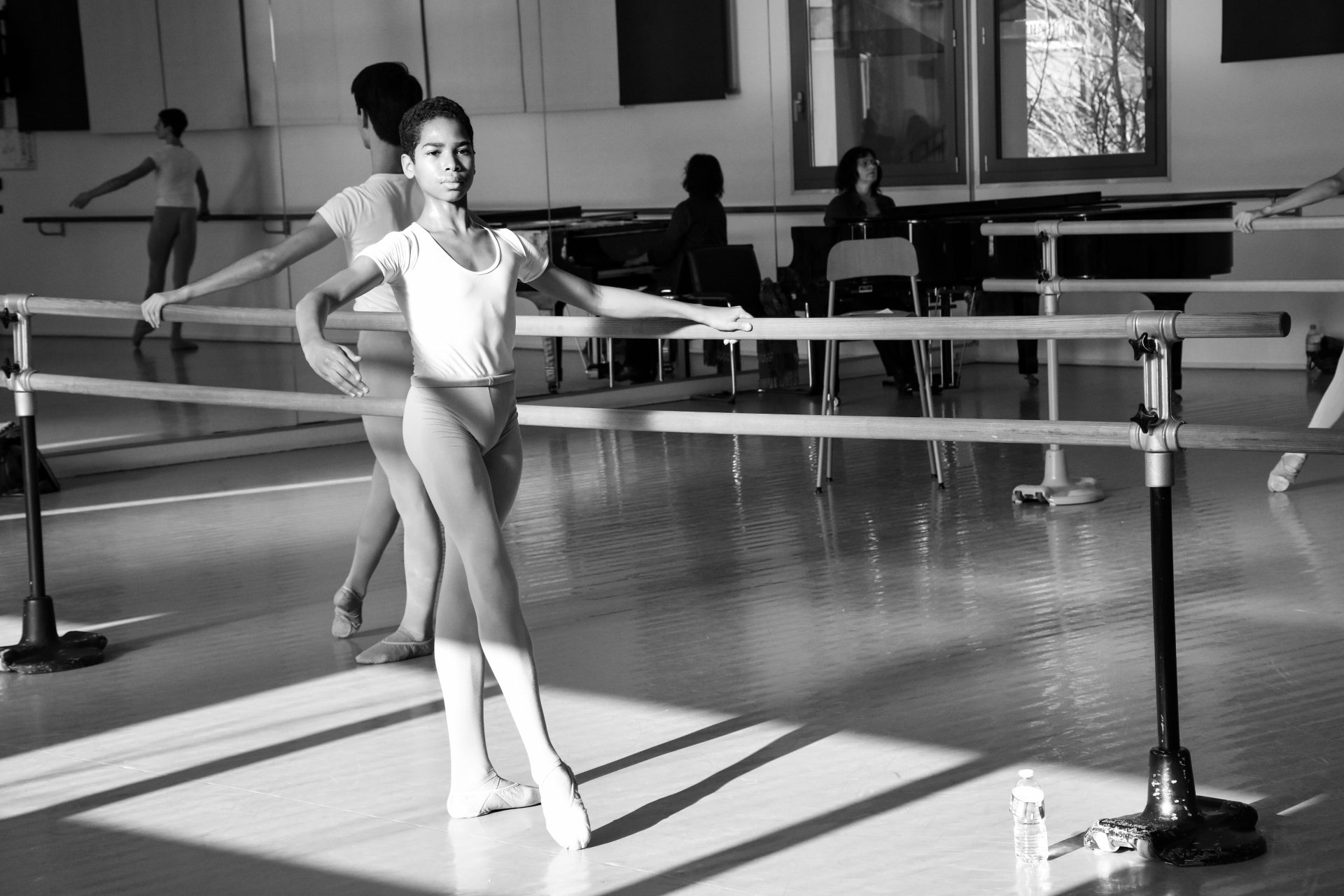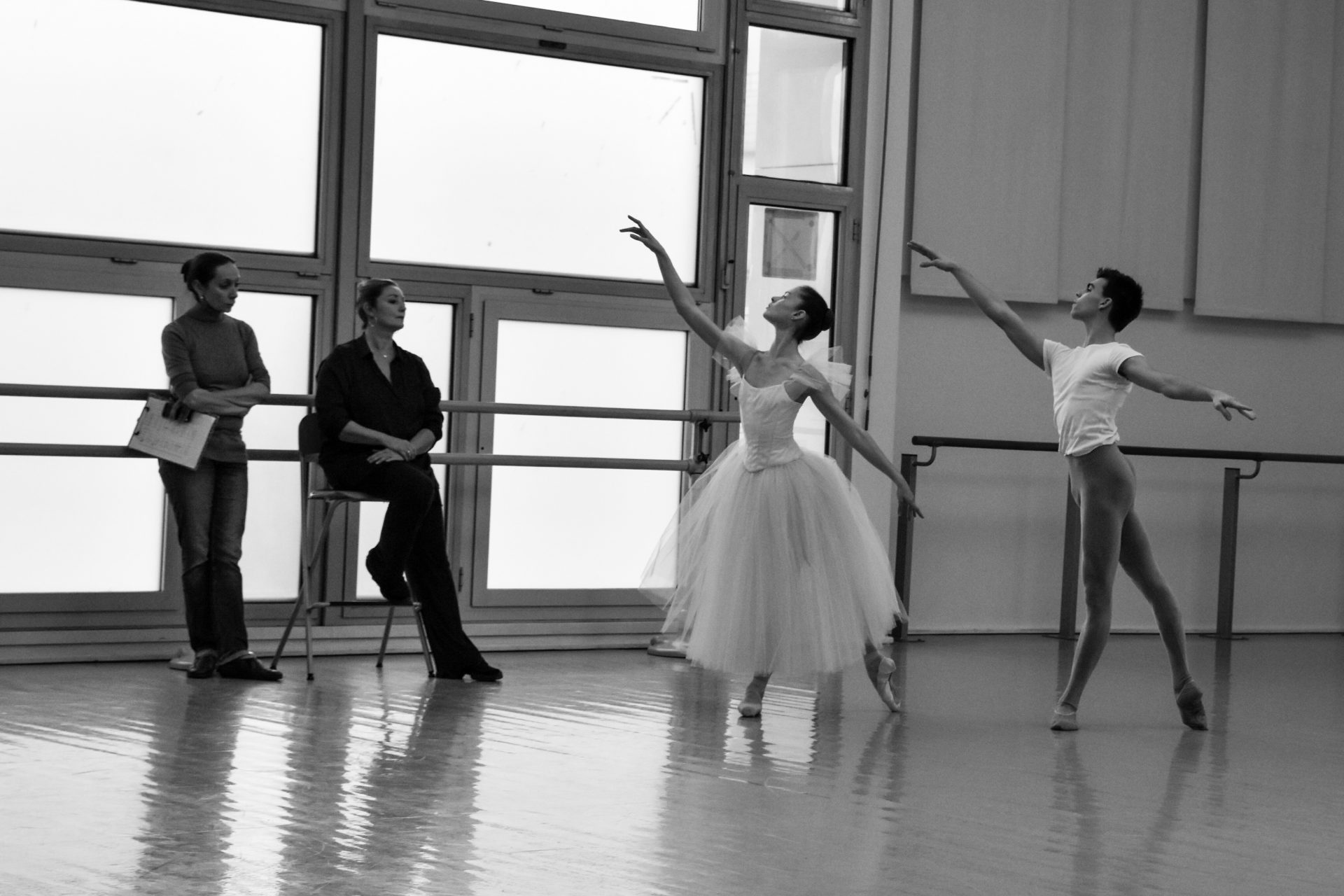5 Jul, 2018 | Admin | No Comments
How Ballet dancers prepare their pointe shoes – R-Class
Original article How Ballet dancers prepare their pointe shoes – R-Class on La Personne.
All great haute couture designers have the typical signs. Some creation or invention which let them to get the immortality, to stay at the top of the fashion Olympus. While talking about Chanel we imagine “little black dress”, Dior is undoubtedly associated with the kilometers of fabric rushing from the tiny waist to the New Look silhouette, Balenciaga means the volume jacket, Paco Rabanne bells the metal. And when speaking of Saint Laurent… This will be neither female smoking jacket dressed on a naked body, nor safari-dress, neither the black-laced back, showing the total absence of underwear, nor the transparent blouse, showing absolutely the same. Not the A-line dress and not even the Mondrian dress. Yves’ second name is colour. The triumph of colour in all its variety, in all its possible and impossible combinations. The modern image of the Fashion House is totally changed – the collections under the Saint Laurent name appeal to something gothic, rock-n-roll, youthful, in times androgynous, dominating black, occasionally mixed with white.
The creative works by Saint Laurent himself oppositely differed by the splash of colours. Raspberry and emerald combinations, flaming red spilled onto the black or inky, fresh lemon shades interlaced with tints of blue – sky, cobalt in neighborhood with blossom pink, shadowed orange and deep violet… Add to the mentioned the plenty of accessories, all-kind decorations, false massive jewelry, the plumage, tinsels and sequins. Yves Saint Laurent was one of the first who started dyeing the fur – and soon the women dressed in fuchsia and turquoise fur-coats goes to the catwalk and further to the city streets. The state national designer, he nearly killed the main precept of French elegance – not over three colours in one look. Mostly curious that till the 1976 Yves Saint Laurent didn’t paint in colour and that the triumph of this creative thought goes to the same period. The colour affair has its roots, Saint Laurent was born under the burning North African sun, he was grown up in culture sophisticatedly called Al Magrib. And during all his creative life he was coming back to the territories he came from.
We are keeping the cultural code of the countries we have grown in. By no doubt there are genes, but also the surrounding medium spirit and it often wins. Yves Henri Donat Mathieu-Saint-Laurent was born and lived until he was 18 years old in Oran – the harbor city in Mediterranean Algeria. The milieu he was raised in, the nonchalant colony atmosphere, that was reigning in French North Africa, the particularities of local architecture – all they influenced his art vision. The turbans, belly dresses, oriental styled gowns often appeared in his collections. His creative interest was mostly lying beyond the European boarders and his brightest collections were dedicated to the faraway countries and unknown cities – the African collection of 1967, the Indian collections in 1980s, the Chinese collection of 1977… Yves Saint Laurent tried to experiment with national clothes – styled Sari, Kimono, Caftan… Adapted headwear – turban, skullcap, Asian hat… If he appealed to Europe – it was something like Andalusia Spain with its fluffy skirts, frills, flounces, flowers. Yves Saint Laurent have never sketched in France. Never. In his young age being the Art Director of the “Christian Dior”, he went for a few-month trip to Oran, to his parents’ house from where he came back with a huge bunch of sketches. Later his personal house in Morocco became his art asylum – the well-known Villa Majorelle where 10 years ago the ashes of Maestro were dispelled. There was one more country in Saint Laurent’s life, the country that caused the special trembling – mysterious, oriental, Tatar-Mongol. But it needs a special storytelling.
What was in the beginning and when the spark burned into the flame… I don’t know, but the fact is Yves Saint Laurent adored Russia. In far 1959, at the times of Khrushchev Thaw the unprecedented occasion happened – the fashion shows of “Christian Dior” took place in the Soviet Union. At that moment the 22-year old Yves was the art director of the fashion house. And there already were some clothes models called after Russian female names in the collection.
Supposed, even this idea belongs to young Maestro – famous photo shooting with the Dior mannequins pictured in Moscow streets, near the sparkling-water machines, at the children’s playgrounds, in the market while buying the lily of the valley bunches from the babushkas. It looks like truth. He was addicted to challenge, to outrageous non-conformist decisions. Later, Russia would become the brightest leitmotiv of Couturier’s life and art. After his resignation from Dior company, while opening his own house one of the patrons of Saint Laurent was Tatiana Yacovleff du Plessix-Liberman – the wife of Conde Nast Publishing editorial director and the swan’s last song of Vladimir Mayakovski. By the way, the poet’s portrait was placed in Saint Laurent house, nearly at his working table. In the territory of the Proust Castle owned by Pierre Berge and Yves Saint Laurent, the real Russian Izba was built. There was also Russian Sauna – The Banya. Yves read Tolstoy, Dostoevsky, Chekhov, Turgenev, Pushkin… He admired Mussorgsky. He drank vodka from the glasses with double-headed eagle… And then the greater collection appeared – the most famous one by Maestro. Later it passed into all fashion encyclopedias, it became the gorgeous fashion masterpiece – haute couture fall/winter 1976 “Operas-Ballets Russes”. Being deeply exhausted and depressed, Yves Saint Laurent created more over one hundred full-coloured sketches, getting inspired by Diaghilev’s “Les saisons Russes”, Bakst paintings, Byzantine culture and Russian folklore. The treasure cave full of gold, brocades, furs, colourful Gypsy skirts, Romany blouses, again furs, caftans, boyar coats, kazaki-boots… The beautiful mannequins’ heads were crowned by Monomakh’s Caps and oriental turbans. It was all in one – Scheherazade and Boris Godunov, the memories of Tatar-Mongol Invasion and Constantinople legacy. That was the fairy tale country by the eyes of genius artist. Moreover, the show was as stroking in its dramatics and scale as Diaghilev’s performances had been. The first time when the haute couture defile came out of the House and turned into the show, into the stage performance accompanied by the fascinating voice of Maria Callas. First time in fashion history the professional hair and make-up stylists worked for the catwalk show, before that the models were always self-assembled. The success was deeply out loud, later the collection would have been quoted for many times and years. The Russian Collection was something like a quintessence of all the things Maestro Yves Saint Laurent so deeply loved – Orient, Russia, colour, history, art, theatre, opera, ballet…
Inspiration, Love, Friendship, Business – that’s what it was. The world of Theatre captured Yves Saint Laurent while he was 11-year old boy – Moliere’s play The School for Wives stage and costume designed by Christian Berard was performed in Oran. When coming back home, young Yves had built teddy theatre with the actor’s silhouettes made of paper, dressed by him in paper dresses. Fifteen years later Yves Saint Laurent would create the costumes for real dramatic and ballet performances. His collaboration with Roland Petit kept the gorgeous legacy – for ballet art, for fashion world for their endless weaves. Cyrano de Bergerac, Les Chants de Maldoror, Palais de Chaillot, The Devil in Love, Notre Dame De Paris – this is not a full list of Petit’ ballets for which Saint Laurent generated costume and stage design. Their tandem was full of harmony – the style of Saint Laurent was so accordant to Roland Petit’s choreography language. Insolent, sensual, elegant, balancing at the edges of propriety, unreached but readable, sophisticated. It chanted the Beauty – of move and gesture, the beauty of personality, the beauty of Woman and human physicality. It is a sort of intellectual sexuality. Some time ago Notre Dame De Paris by Roland Petit was in the repertoire of the Bolshoi Theatre – of course with the costumes designed by Maestro.
To dress a Ballerina is a highly pleasant thing – slim bodies, straight backs, graceful lines, lightness, plasticity…
Principal dancers often chose the dresses by Saint Laurent for social and stage go-outs. The Dame Margot Fonteyn and Roland Petit’s wife – petite Zizi Jeanmaire. Later, Yves will create all her music-hall costumes – all these fancy plumage in pink, dare mini skirts, jackets decorated with sequins and bugle beads were the masterpieces of Saint Laurent’s hands and thought. For the Principal of Opera de Paris – the wife of Pierre Lacotte – Ghislaine Thesmar, the Designer sketched the costumes for Scheherazade ballet. For Maya Plisetskaya he designed the airy tunic made of pinky chiffon. The ballet was La Rose Malade by Roland Petit. When the foreign pink curiosity got into the costume department of the Bolshoi it caused some kind of shock – there were no such tailoring technology in Soviet Russia, also the design was ground breaking. It was the only Saint Laurent’s creation for Plisetskaya, but he was proud of it deeply – the portrait of Maya in a pink tunic had an honorary place in the Maestro’s Home (somewhere aside the portrait of Mayakovski).
Chanel took us from feminity and sensuality, but lead to elegance and usability. Dior gave us back the Woman’s look, but picked up the utility. Somehow magically Yves Saint Laurent could combine the best from his teachers. More than any other couturier he managed to feel and understand a Woman – her thoughts, her desires, her mood, her inner sense. Maestro made friends with the greatest, most beautiful, most interesting women of his time – actresses, ballerinas, writers, painters, fashion models, first ladies… They were his confidents, muses, colleagues, party partners. Night Paris still gets the memories of them – irreproachably dressed Yves Saint Laurent, the ideal Nordic blonde Betty Catroux in a styled male costume, graceful Loulou de la Falaise wearing colourful dress and a turban. Betty was Yves’s fashion model and the main friend-in-party, Loulou was responsible for jewelry design in Yves Saint Laurent House.
Untill the last collection in 2001 Catherine Deneuve was a fashion icon and the ambassador of Saint Laurent style. She was like a treasure of a front row at all the haut couture shows and every social go-out was marked with a new Yves Saint Laurent look.
Among the favourite mannequins and fashion models there were exotic chocolate skin beauties – Mounya and Kirat, gorgeous Veruschka. He was the first who had found the extraordinary charm of young Laetitia Casta. He devoted the whole collections to his eccentric muse Paloma Picasso. To Elsa Triolet, the wife of Louis Aragon, he dedicated his famous jacket – The Eyes of Elsa – named after Henri Matisse painting. Now this jacket is a part of fashion legacy. There was long-term warm friendship between Maestro and Elsa’s sister – the main infernal woman for Russian literature – Lilya Brik. As the legend tells they got acquainted in the airport during one of his visits to Moscow. Yves noticed a stylish elder woman at Sheremetievo, approached her and just told that she was the most elegant woman in Soviet Union. After there were years of correspondence, Yves Saint Laurent sent Lilya lots of precious gifts – bags, shawls, bijoux from his latest collections. Lilya accepted them graciously.
Not about the things you could think. It is all about the dogs. Yves Saint Laurent adored French Bulldogs like Mayakovski did. Mayakovski called his bulldog Bulka. The name for Saint Laurent’s bulldogs was – the Muzhik – for all of them. When one Muzhik died, the other took his place. So all they passed by in such a manner – Muzhik I, Muzhik II, Muzhik III… For the life there were five of them. They say, the fifth was the most severe – he could simply not let anyone approach the master, if he didn’t like him, could yelp over and even bite. It is interesting that all the dogs looked totally similar. Why the Muzhik? Because Yves Saint Laurent was mad about Russia and all Russian things, he loved how it sounded in French – this mysterious Slavic word. Supposed, it was Lilya Brik who gave an idea to call bulldogs by this name. But appealing to the chronology the Muzhiks ran into Saint Laurent’s Life before the fatal Lilychka. Saint Laurent’s Muzhik was even painted by Andy Warhol in a line with Commandante Che and Marilyn Monroe.
Yves Saint Laurent and some interesting facts
Yves Saint Laurent was born in a wealthy family. His forefathers came from Switzerland. Yves’ great-grandfather made a wedding contract for Napoleon I and Josephine de Beauharnais.
The co-owner of Villa Majorelle was Alain Delon. Later he sold his share to the principal owners.
The talisman to Yves Saint Laurent was ruby-red heart. The heart garnished his favorite models in the collection.
Yves was the first who employed black models.
Yves was the first Couturier who got totally naked for ad campaign of his premiere perfume. The photo was pictured by well-known Jeanloup Sieff.
“I drink champagne to celebrate the victory and to get calm after defeat” – the expression had to be the slogan for perfume called Champagne. The name was prohibited by the Champagne Syndicate. The perfume turned into Yvresse.
Yves Saint Laurent opened the first pret-a-porter boutique Yves Saint Laurent Rive Gauche and became the discover of the Left Coast by Seine River.
After his retirement from the post of art director of Yves Saint Laurent House, day by day he went to work and continued to paint – the sketches that never turned into the clothes.
Epilogue
Somewhere at the other side, the other continent, the other world… In a place where the French piano-bar melodies are interlaced with the voice of namaz, where the Berber old ladies tell you future and world’s secrets for a few steady coins, in a city where The Aeroflot does not fly to, there is a half-destroyed column. It is hidden under the shadows of the lemon trees, in the heart of the cactus garden, planted beside the bright blue walls. This column is the memorial for Yves Saint Laurent. Ten years ago, 1st of June 2008, the Couturier passed away at the age of 71. The date we issue our story is not random. For these ten years lots of books were dedicates to the life and art of Yves Saint Laurent… Lots of films and documentaries, scientific and life-style articles. This is one of the most fertile themes for fashion historians, for theatre experts, one of the most captivating names. Three letters of Pure Magic we will always remember in spite of any re-branding. Because, there is no Saint Laurent without Yves.
Text Ekaterina Bornovitskaya
Photo Karina Zhitkova
Style Diana Klochko
MUAH Natalia Chemerova
Production Ekaterina Bornovitskaya & Karina Zhitkova
Special thanks to Boutique-hotel Petroff Palace.
Original article Yves Saint Laurent on La Personne.
All great haute couture designers have the typical signs. Some creation or invention which let them to get the immortality, to stay at the top of the fashion Olympus. While talking about Chanel we imagine “little black dress”, Dior is undoubtedly associated with the kilometers of fabric rushing from the tiny waist to the New Look silhouette, Balenciaga means the volume jacket, Paco Rabanne bells the metal. And when speaking of Saint Laurent… This will be neither female smoking jacket dressed on a naked body, nor safari-dress, neither the black-laced back, showing the total absence of underwear, nor the transparent blouse, showing absolutely the same. Not the A-line dress and not even the Mondrian dress. Yves’ second name is colour. The triumph of colour in all its variety, in all its possible and impossible combinations. The modern image of the Fashion House is totally changed – the collections under the Saint Laurent name appeal to something gothic, rock-n-roll, youthful, in times androgynous, dominating black, occasionally mixed with white.
The creative works by Saint Laurent himself oppositely differed by the splash of colours. Raspberry and emerald combinations, flaming red spilled onto the black or inky, fresh lemon shades interlaced with tints of blue – sky, cobalt in neighborhood with blossom pink, shadowed orange and deep violet… Add to the mentioned the plenty of accessories, all-kind decorations, false massive jewelry, the plumage, tinsels and sequins. Yves Saint Laurent was one of the first who started dyeing the fur – and soon the women dressed in fuchsia and turquoise fur-coats goes to the catwalk and further to the city streets. The state national designer, he nearly killed the main precept of French elegance – not over three colours in one look. Mostly curious that till the 1976 Yves Saint Laurent didn’t paint in colour and that the triumph of this creative thought goes to the same period. The colour affair has its roots, Saint Laurent was born under the burning North African sun, he was grown up in culture sophisticatedly called Al Magrib. And during all his creative life he was coming back to the territories he came from.
We are keeping the cultural code of the countries we have grown in. By no doubt there are genes, but also the surrounding medium spirit and it often wins. Yves Henri Donat Mathieu-Saint-Laurent was born and lived until he was 18 years old in Oran – the harbor city in Mediterranean Algeria. The milieu he was raised in, the nonchalant colony atmosphere, that was reigning in French North Africa, the particularities of local architecture – all they influenced his art vision. The turbans, belly dresses, oriental styled gowns often appeared in his collections. His creative interest was mostly lying beyond the European boarders and his brightest collections were dedicated to the faraway countries and unknown cities – the African collection of 1967, the Indian collections in 1980s, the Chinese collection of 1977… Yves Saint Laurent tried to experiment with national clothes – styled Sari, Kimono, Caftan… Adapted headwear – turban, skullcap, Asian hat… If he appealed to Europe – it was something like Andalusia Spain with its fluffy skirts, frills, flounces, flowers. Yves Saint Laurent have never sketched in France. Never. In his young age being the Art Director of the “Christian Dior”, he went for a few-month trip to Oran, to his parents’ house from where he came back with a huge bunch of sketches. Later his personal house in Morocco became his art asylum – the well-known Villa Majorelle where 10 years ago the ashes of Maestro were dispelled. There was one more country in Saint Laurent’s life, the country that caused the special trembling – mysterious, oriental, Tatar-Mongol. But it needs a special storytelling.
What was in the beginning and when the spark burned into the flame… I don’t know, but the fact is Yves Saint Laurent adored Russia. In far 1959, at the times of Khrushchev Thaw the unprecedented occasion happened – the fashion shows of “Christian Dior” took place in the Soviet Union. At that moment the 22-year old Yves was the art director of the fashion house. And there already were some clothes models called after Russian female names in the collection.
Supposed, even this idea belongs to young Maestro – famous photo shooting with the Dior mannequins pictured in Moscow streets, near the sparkling-water machines, at the children’s playgrounds, in the market while buying the lily of the valley bunches from the babushkas. It looks like truth. He was addicted to challenge, to outrageous non-conformist decisions. Later, Russia would become the brightest leitmotiv of Couturier’s life and art. After his resignation from Dior company, while opening his own house one of the patrons of Saint Laurent was Tatiana Yacovleff du Plessix-Liberman – the wife of Conde Nast Publishing editorial director and the swan’s last song of Vladimir Mayakovski. By the way, the poet’s portrait was placed in Saint Laurent house, nearly at his working table. In the territory of the Proust Castle owned by Pierre Berge and Yves Saint Laurent, the real Russian Izba was built. There was also Russian Sauna – The Banya. Yves read Tolstoy, Dostoevsky, Chekhov, Turgenev, Pushkin… He admired Mussorgsky. He drank vodka from the glasses with double-headed eagle… And then the greater collection appeared – the most famous one by Maestro. Later it passed into all fashion encyclopedias, it became the gorgeous fashion masterpiece – haute couture fall/winter 1976 “Operas-Ballets Russes”. Being deeply exhausted and depressed, Yves Saint Laurent created more over one hundred full-coloured sketches, getting inspired by Diaghilev’s “Les saisons Russes”, Bakst paintings, Byzantine culture and Russian folklore. The treasure cave full of gold, brocades, furs, colourful Gypsy skirts, Romany blouses, again furs, caftans, boyar coats, kazaki-boots… The beautiful mannequins’ heads were crowned by Monomakh’s Caps and oriental turbans. It was all in one – Scheherazade and Boris Godunov, the memories of Tatar-Mongol Invasion and Constantinople legacy. That was the fairy tale country by the eyes of genius artist. Moreover, the show was as stroking in its dramatics and scale as Diaghilev’s performances had been. The first time when the haute couture defile came out of the House and turned into the show, into the stage performance accompanied by the fascinating voice of Maria Callas. First time in fashion history the professional hair and make-up stylists worked for the catwalk show, before that the models were always self-assembled. The success was deeply out loud, later the collection would have been quoted for many times and years. The Russian Collection was something like a quintessence of all the things Maestro Yves Saint Laurent so deeply loved – Orient, Russia, colour, history, art, theatre, opera, ballet…
Inspiration, Love, Friendship, Business – that’s what it was. The world of Theatre captured Yves Saint Laurent while he was 11-year old boy – Moliere’s play The School for Wives stage and costume designed by Christian Berard was performed in Oran. When coming back home, young Yves had built teddy theatre with the actor’s silhouettes made of paper, dressed by him in paper dresses. Fifteen years later Yves Saint Laurent would create the costumes for real dramatic and ballet performances. His collaboration with Roland Petit kept the gorgeous legacy – for ballet art, for fashion world for their endless weaves. Cyrano de Bergerac, Les Chants de Maldoror, Palais de Chaillot, The Devil in Love, Notre Dame De Paris – this is not a full list of Petit’ ballets for which Saint Laurent generated costume and stage design. Their tandem was full of harmony – the style of Saint Laurent was so accordant to Roland Petit’s choreography language. Insolent, sensual, elegant, balancing at the edges of propriety, unreached but readable, sophisticated. It chanted the Beauty – of move and gesture, the beauty of personality, the beauty of Woman and human physicality. It is a sort of intellectual sexuality. Some time ago Notre Dame De Paris by Roland Petit was in the repertoire of the Bolshoi Theatre – of course with the costumes designed by Maestro.
To dress a Ballerina is a highly pleasant thing – slim bodies, straight backs, graceful lines, lightness, plasticity…
Principal dancers often chose the dresses by Saint Laurent for social and stage go-outs. The Dame Margot Fonteyn and Roland Petit’s wife – petite Zizi Jeanmaire. Later, Yves will create all her music-hall costumes – all these fancy plumage in pink, dare mini skirts, jackets decorated with sequins and bugle beads were the masterpieces of Saint Laurent’s hands and thought. For the Principal of Opera de Paris – the wife of Pierre Lacotte – Ghislaine Thesmar, the Designer sketched the costumes for Scheherazade ballet. For Maya Plisetskaya he designed the airy tunic made of pinky chiffon. The ballet was La Rose Malade by Roland Petit. When the foreign pink curiosity got into the costume department of the Bolshoi it caused some kind of shock – there were no such tailoring technology in Soviet Russia, also the design was ground breaking. It was the only Saint Laurent’s creation for Plisetskaya, but he was proud of it deeply – the portrait of Maya in a pink tunic had an honorary place in the Maestro’s Home (somewhere aside the portrait of Mayakovski).
Chanel took us from feminity and sensuality, but lead to elegance and usability. Dior gave us back the Woman’s look, but picked up the utility. Somehow magically Yves Saint Laurent could combine the best from his teachers. More than any other couturier he managed to feel and understand a Woman – her thoughts, her desires, her mood, her inner sense. Maestro made friends with the greatest, most beautiful, most interesting women of his time – actresses, ballerinas, writers, painters, fashion models, first ladies… They were his confidents, muses, colleagues, party partners. Night Paris still gets the memories of them – irreproachably dressed Yves Saint Laurent, the ideal Nordic blonde Betty Catroux in a styled male costume, graceful Loulou de la Falaise wearing colourful dress and a turban. Betty was Yves’s fashion model and the main friend-in-party, Loulou was responsible for jewelry design in Yves Saint Laurent House.
Untill the last collection in 2001 Catherine Deneuve was a fashion icon and the ambassador of Saint Laurent style. She was like a treasure of a front row at all the haut couture shows and every social go-out was marked with a new Yves Saint Laurent look.
Among the favourite mannequins and fashion models there were exotic chocolate skin beauties – Mounya and Kirat, gorgeous Veruschka. He was the first who had found the extraordinary charm of young Laetitia Casta. He devoted the whole collections to his eccentric muse Paloma Picasso. To Elsa Triolet, the wife of Louis Aragon, he dedicated his famous jacket – The Eyes of Elsa – named after Henri Matisse painting. Now this jacket is a part of fashion legacy. There was long-term warm friendship between Maestro and Elsa’s sister – the main infernal woman for Russian literature – Lilya Brik. As the legend tells they got acquainted in the airport during one of his visits to Moscow. Yves noticed a stylish elder woman at Sheremetievo, approached her and just told that she was the most elegant woman in Soviet Union. After there were years of correspondence, Yves Saint Laurent sent Lilya lots of precious gifts – bags, shawls, bijoux from his latest collections. Lilya accepted them graciously.
Not about the things you could think. It is all about the dogs. Yves Saint Laurent adored French Bulldogs like Mayakovski did. Mayakovski called his bulldog Bulka. The name for Saint Laurent’s bulldogs was – the Muzhik – for all of them. When one Muzhik died, the other took his place. So all they passed by in such a manner – Muzhik I, Muzhik II, Muzhik III… For the life there were five of them. They say, the fifth was the most severe – he could simply not let anyone approach the master, if he didn’t like him, could yelp over and even bite. It is interesting that all the dogs looked totally similar. Why the Muzhik? Because Yves Saint Laurent was mad about Russia and all Russian things, he loved how it sounded in French – this mysterious Slavic word. Supposed, it was Lilya Brik who gave an idea to call bulldogs by this name. But appealing to the chronology the Muzhiks ran into Saint Laurent’s Life before the fatal Lilychka. Saint Laurent’s Muzhik was even painted by Andy Warhol in a line with Commandante Che and Marilyn Monroe.
Yves Saint Laurent and some interesting facts
Yves Saint Laurent was born in a wealthy family. His forefathers came from Switzerland. Yves’ great-grandfather made a wedding contract for Napoleon I and Josephine de Beauharnais.
The co-owner of Villa Majorelle was Alain Delon. Later he sold his share to the principal owners.
The talisman to Yves Saint Laurent was ruby-red heart. The heart garnished his favorite models in the collection.
Yves was the first who employed black models.
Yves was the first Couturier who got totally naked for ad campaign of his premiere perfume. The photo was pictured by well-known Jeanloup Sieff.
“I drink champagne to celebrate the victory and to get calm after defeat” – the expression had to be the slogan for perfume called Champagne. The name was prohibited by the Champagne Syndicate. The perfume turned into Yvresse.
Yves Saint Laurent opened the first pret-a-porter boutique Yves Saint Laurent Rive Gauche and became the discover of the Left Coast by Seine River.
After his retirement from the post of art director of Yves Saint Laurent House, day by day he went to work and continued to paint – the sketches that never turned into the clothes.
Epilogue
Somewhere at the other side, the other continent, the other world… In a place where the French piano-bar melodies are interlaced with the voice of namaz, where the Berber old ladies tell you future and world’s secrets for a few steady coins, in a city where The Aeroflot does not fly to, there is a half-destroyed column. It is hidden under the shadows of the lemon trees, in the heart of the cactus garden, planted beside the bright blue walls. This column is the memorial for Yves Saint Laurent. Ten years ago, 1st of June 2008, the Couturier passed away at the age of 71. The date we issue our story is not random. For these ten years lots of books were dedicates to the life and art of Yves Saint Laurent… Lots of films and documentaries, scientific and life-style articles. This is one of the most fertile themes for fashion historians, for theatre experts, one of the most captivating names. Three letters of Pure Magic we will always remember in spite of any re-branding. Because, there is no Saint Laurent without Yves.
Text Ekaterina Bornovitskaya
Photo Karina Zhitkova
Style Diana Klochko
MUAH Natalia Chemerova
Production Ekaterina Bornovitskaya & Karina Zhitkova
Special thanks to Boutique-hotel Petroff Palace.
Original article Yves Saint Laurent on La Personne.
France. The country that the mere mention of makes most people to think of Paris, wine, amazing cuisine and, of course, ballet.
In order to find out what exactly makes French ballet so good and revered, we went to the very cradle of not only French but ballet in general – École de Danse de l’Opera de Paris.
Founded in 1713, École de Danse has been a pinnacle of the ballet education throughout the centuries. Yet times change and so does the school. New Artistic director in the face of Elizabeth Platel, the new building to better suit the needs of students, yet the soul of the oldest ballet school in the world lives on.
The elegance of the old days is the foundation on which the majestic French style is built upon. It doesn’t want dancers to get their legs as high as possible, or get as many spins as they are able to. Not because dancers are not capable of it, they are, but because it doesn’t look elegant, it doesn’t look majestic, it doesn’t look French.
Yet the traditions of the École de Danse do not only concern the style of dance, they are integrated into the very lives of the students.
In the modern world, equality often takes the form of individualism. People view these old habits as a sign of submission or superiority and because of that, the school is often criticised for these traditions. Yet the traditions of the old days do not necessarily signal submission, on the contrary, they signal equality. Equality in respect.
This often poses problems for students outside the school. As they are taught from the young age to such a high and rare standard of social behavior, sometimes it’s hard for them to operate in the outside world, that rarely answers them with such respect. The students are made to be perfectionists in everything they do. Even when they study math, philosophy, geometry, all of them perform exceptionally well, despite it not being their main field of study. For them, everything matters and everything should be perfect.
And the life in the school is filled with this perfection. The day of the students is strictly scheduled: wake up hours, courses, dinner, dance classes, bedtime, everything. For a body of the dancer is his most precious instrument, and as any kind of instrument must be maintained in a good shape. And what a better way to teach students how to attend to their bodies, than carefully craft a schedule optimised for it.
But it doesn’t end there. During the classes, students wear the same uniform, their hair must be perfectly done, their jewelry must not be allowed to the class, etc.
The new always strives to kill the old and often succeeds. Yet here, the school managed to ally them and harvest both for their benefits. École de Dance is the place, where the feel of high society of the old days and benefits of the modern-day techniques combine to create something truly magnificent.
The key to this unique combination lies in the approach that the school takes in regard to traditions. They are valued, yes, but not sacred. Unlike some, who see traditions as a cage that provides stability and must not be exited under any circumstances, École de Danse uses traditions as a foundation to build upon.
The perfect example of that is the Russian school of ballet. Centuries ago, French dancers went to Russia to spread their culture of classical dance.
Now students of the school reap the benefits. Every year they give a concert at the Opera Paris, where they allow the audience to peek behind the doors of the school at watch live classes on the stage of one of the world’s leading theatres.
I was visiting the school just before their first performance this year. Despite having such a major performance looming around the corner, the atmosphere among students was quite relaxed. Not something you could say about Madame Platel and the teachers. All their thoughts were revolving around the Demonstration. And rightfully so, not only the strive towards perfection is a normal approach in ballet, but what made the situation even more intense, was that students won’t be able to reverse on the actual stage of the theatre even once. This is a great challenge, as the stage in Opera Paris is drastically different from the small stage that they have in the school.
When the day finally arrived, however, no-one could have guessed that it was the first time the students actually entered the stage. I was fortunate to sit next to one of the directors of choreography school, and while chatting in between the acts, she said, that even knowing all these techniques and exercises, she was amazed how synchronized everything was. Оne of the hardest things for ballet students in their studies is to learn to do everything synchronically, yet the students of École de Danse had no such problem. Or at least didn’t seem to have.
Before the performance I was wondering, how close to reality the demonstration would be. At the end of the day, when it comes to the open classes, everyone, not only in the ballet, tries to show themselves in the best light. Everyone, but École de Danse, as it turned out. What I saw in the school during actual classes was exactly what I saw on the stage. If the student didn’t perform something the way he should have, the teacher would ask him to do that again in from of the sold-out hall of Opera Paris. It seems that the school doesn’t have to show itself in the brighter light, it’s bright enough as it is.
And indeed, École de Danse is something out of this world. Despite the modern building, modern clothes, all the luxury of the 21st century, the feel of the school is not modern at all. Yet it’s not old-fashioned either. It’s one of the unique places I’ve ever been – classic yet modern, historic yet young, timeless yet fluent in time.
Author Andrey Avramchuk
Original article L’École de la Vie de l’Opera de Paris on La Personne.
